TIPS TO OVERCOME LONELINESS & ISOLATION
THE JOY OF A MEANINGFUL LIFE SUPPORTING YOUR AGING LOVED ONES

TIPS TO OVERCOME LONELINESS & ISOLATION
THE JOY OF A MEANINGFUL LIFE SUPPORTING YOUR AGING LOVED ONES

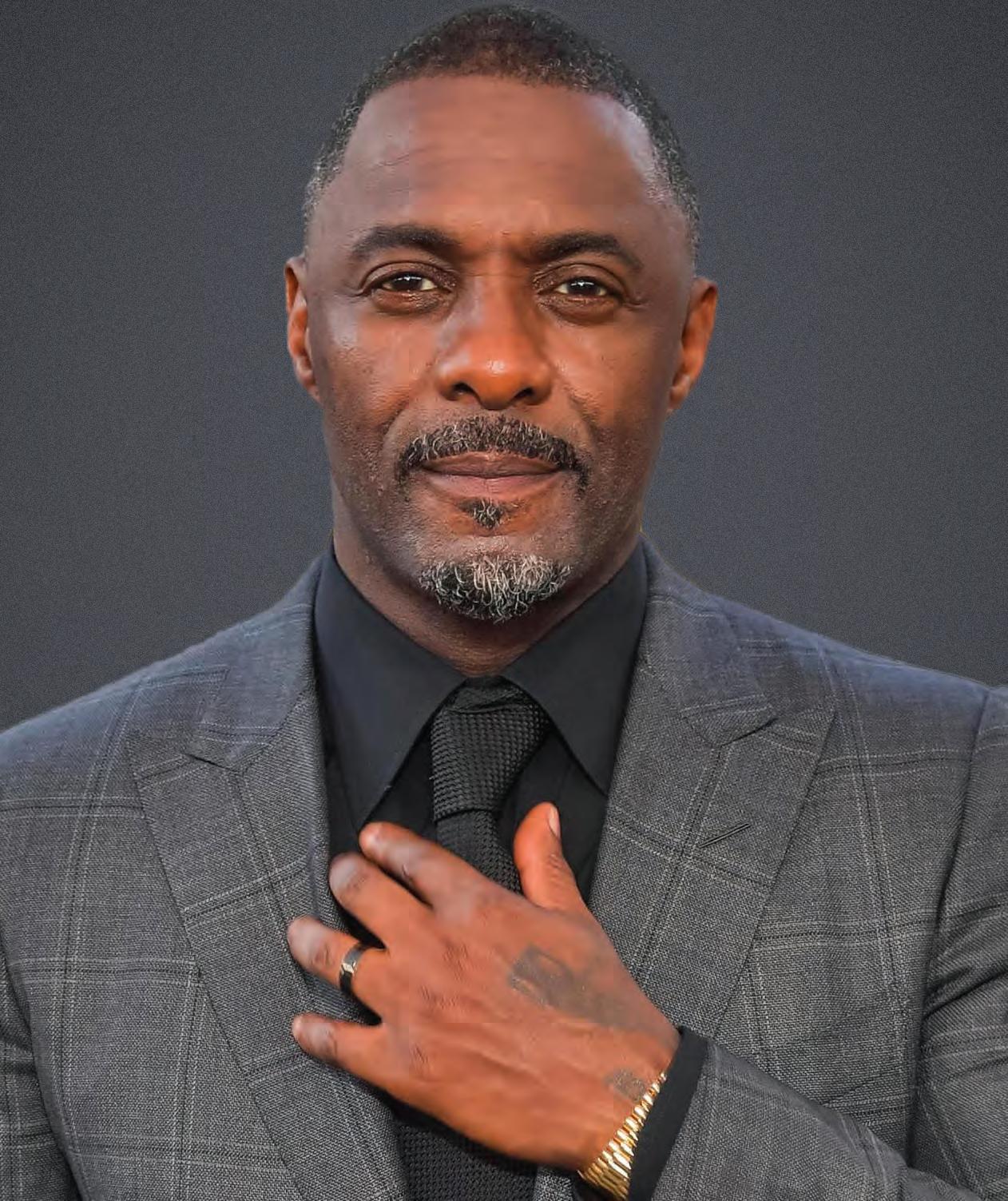

Texas Health Flower Mound Weight Loss Center o ers comprehensive weight loss programs complete with diagnostic, surgical and non-surgical options designed to promote a full and healthy life.
Texas Health Flower Mound Weight Loss Center o ers comprehensive weight loss programs complete with diagnostic, surgical and non-surgical options designed to promote a full and healthy life.
Our bariatric team consists of board certified bariatric surgeons, experienced bariatric practitioners, nurses, dietitians and coordinators.
Our bariatric team consists of board certified bariatric surgeons, experienced bariatric practitioners, nurses, dietitians and coordinators.
A dedicated weight loss specialist will be with you each step of your experience - from your initial appointment, through diagnosis, treatment, after care and follow-up maintenance appointments.
A dedicated weight loss specialist will be with you each step of your experience - from your initial appointment, through diagnosis, treatment, after care and follow-up maintenance appointments.
For more information or to schedule a consultation, please call 469-322-7073 or visit the Center’s website at TexasHealthFlowerMound.com/weight-loss-center
For more information or to schedule a consultation, please call 469-322-7073 or visit the Center’s website at TexasHealthFlowerMound.com/weight-loss-center

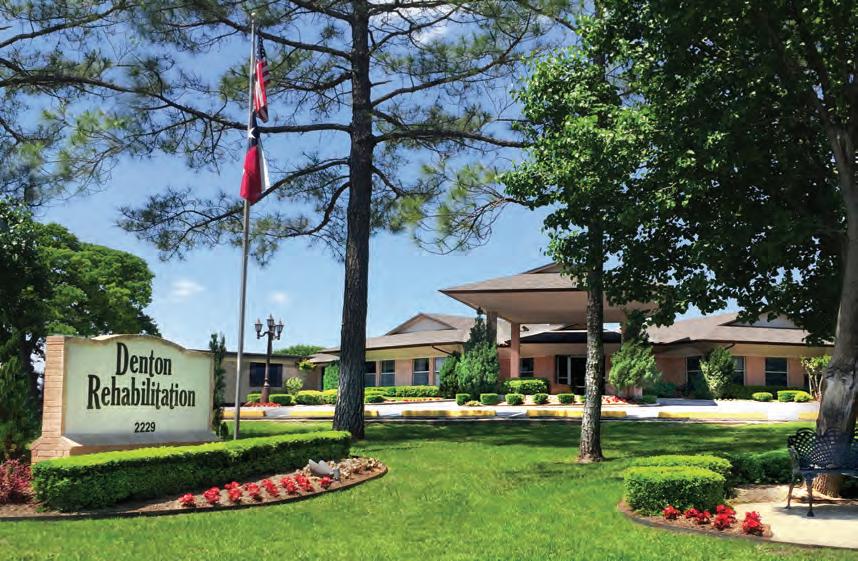



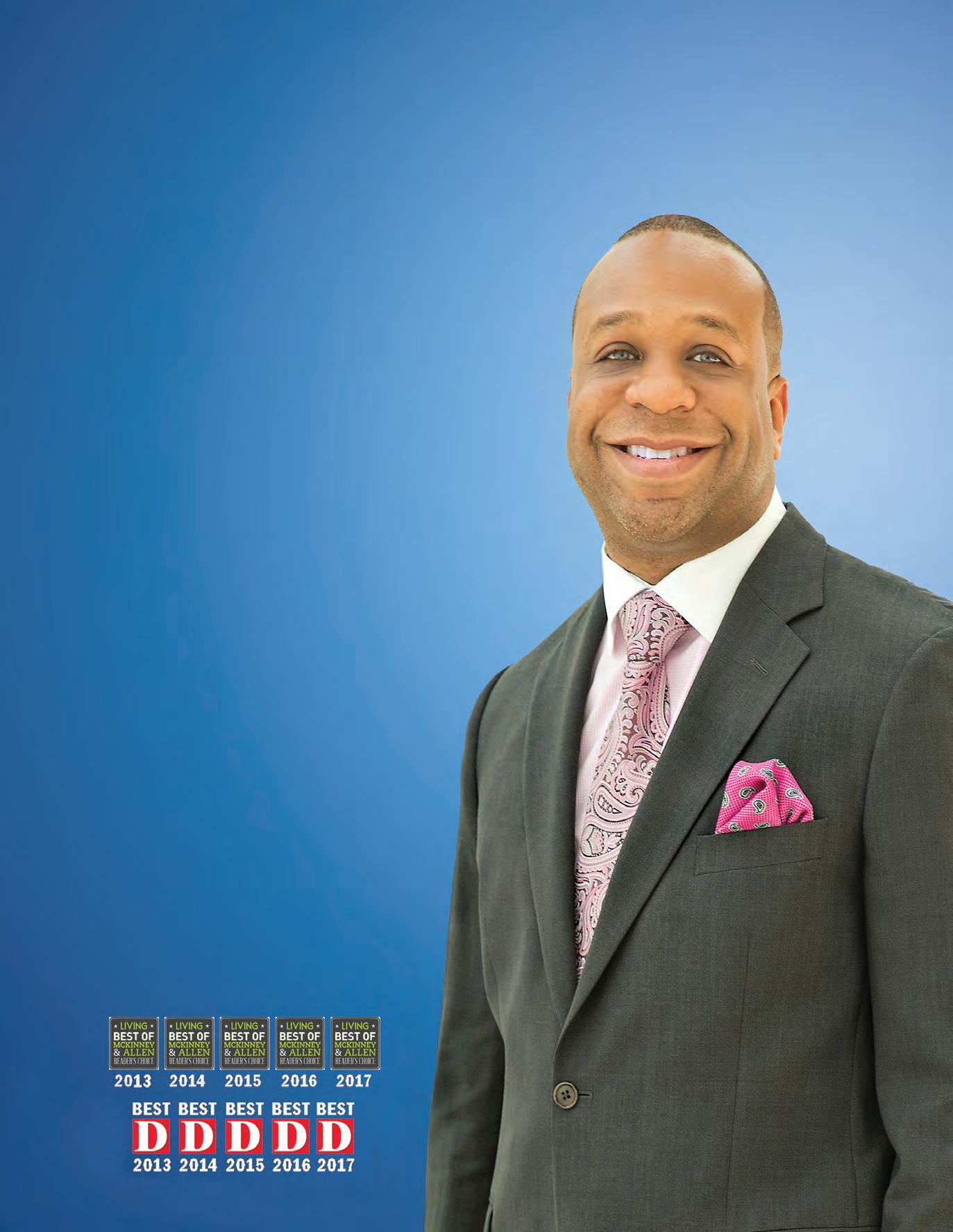
Total
Partial
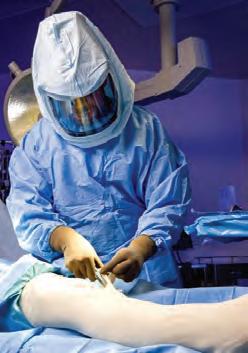

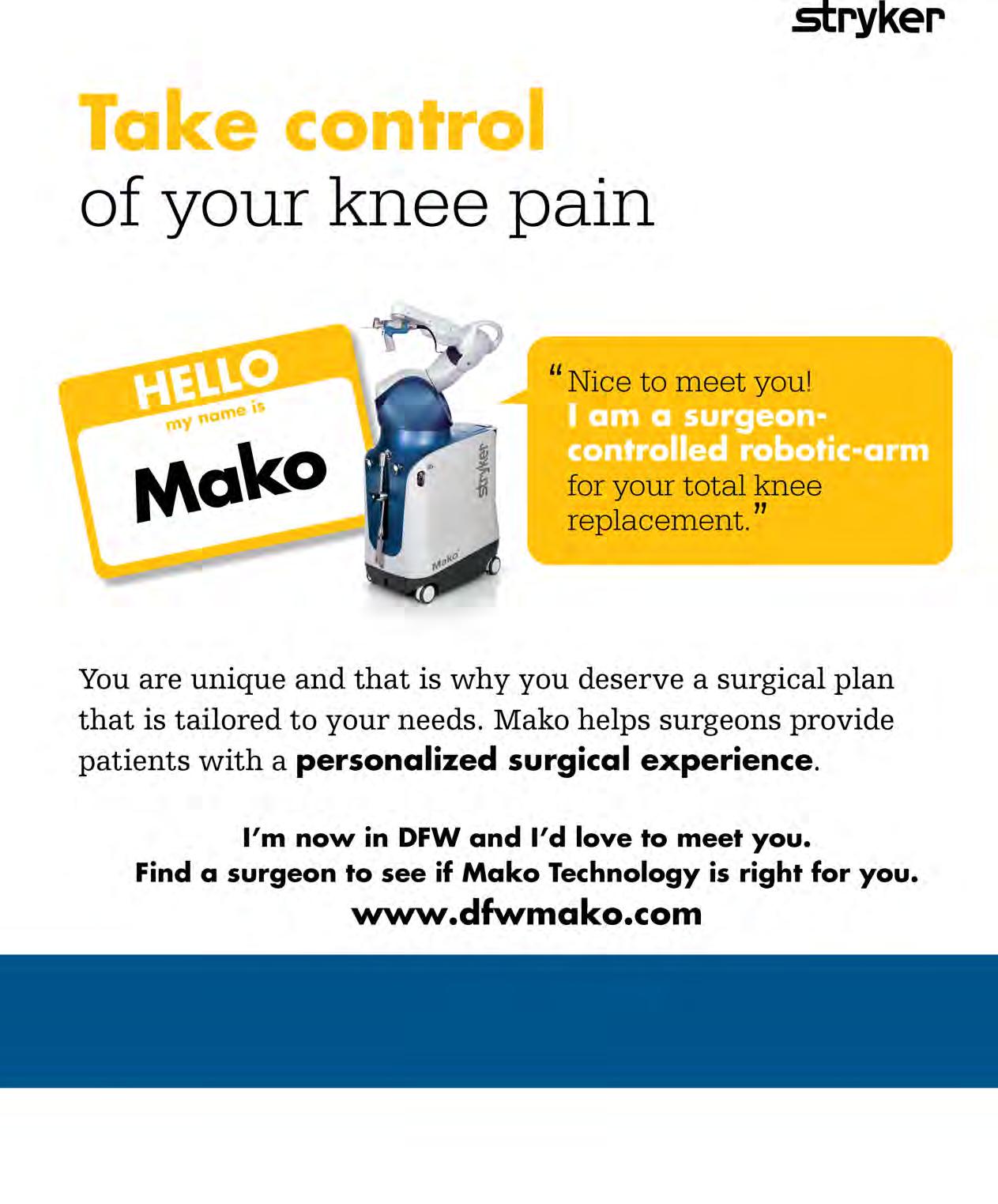
Idris Elba’s face has been showing up a lot. If you haven’t noticed, it may be because Elba’s list of projects are as varied and nuanced as the man himself. In case you missed his 2018 turn on the cover of People’s Sexiest Man Alive issue, you could have seen the 48-year-old in any number of recent blockbusters including Thor, Hobbs & Shaw, or The Mountain Between Us
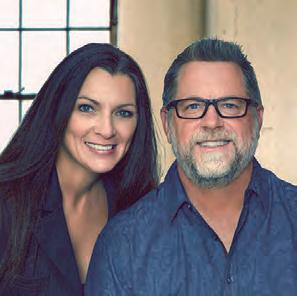
Of course, you may have spied Elba getting the party started at Prince Harry and Meghan Markle’s royal wedding (no, we weren’t invited either), where he was personally asked by the prince to DJ for guests. Or, perhaps you caught Elba performing at the much-vaunted Coachella and Glastonbury music festivals. At any rate, the multi-talented guy is having a moment as both an actor and DJ and we’re here to talk about it in this issue’s celebrity cover story.
Among the other articles you’ll also fid inside ran the gamut from health and wellness topics to how to fid the best legal and medical professionals for your unique needs. On the topic of wellness, you won’t want to miss timely tips on how to overcome loneliness and isolation, an issue that is especially important in light of the current pandemic. There’s something for everyone inside this issue of LIVING WELL
We invite you to check it all out.
Be well!

PRESIDENT & CEO SAM HOUSTON
VICE PRESIDENT & CFO SPRING HOUSTON
EDITOR, FEATURE WRITER & SOCIAL MEDIA SONDRA BARR
ART DIRECTOR VANESSA FRYER
ACCOUNTS MANAGER JENNIFER BEAVERS
WEBSITE LYDIA ROGERS
ADVERTISING & SALES
TEXAS: Denton County, Dallas County, Collin County
TEXAS & OKLAHOMA: Texoma Area
WRITE TO US:
Tell us who you would like to see featured on the cover, or what subjects you would like covered in upcoming editions of LIVING WELL MAGAZINE at info@livingwellmag.com
SUBSCRIPTIONS & CUSTOMER INQUIRIES
Houstons of Dallas Publishing, Inc. 102 E. Broadway, #901 Prosper, TX 75078 www.LivingWellmag.com
Phone: (214) 507-1000 Fax: (855) 248-2132
LIVING WELL MAGAZINE is a source for quality educational articles on living a healthy, vibrant life. Our focus is on connecting our readers with the latest information on a host of topics relevant to their evolving life. From cutting edge medical news and procedures to top-tier financial, legal and lifestyle information. Connecting readers to leading medical and business professionals in their community in Texas and Oklahoma.





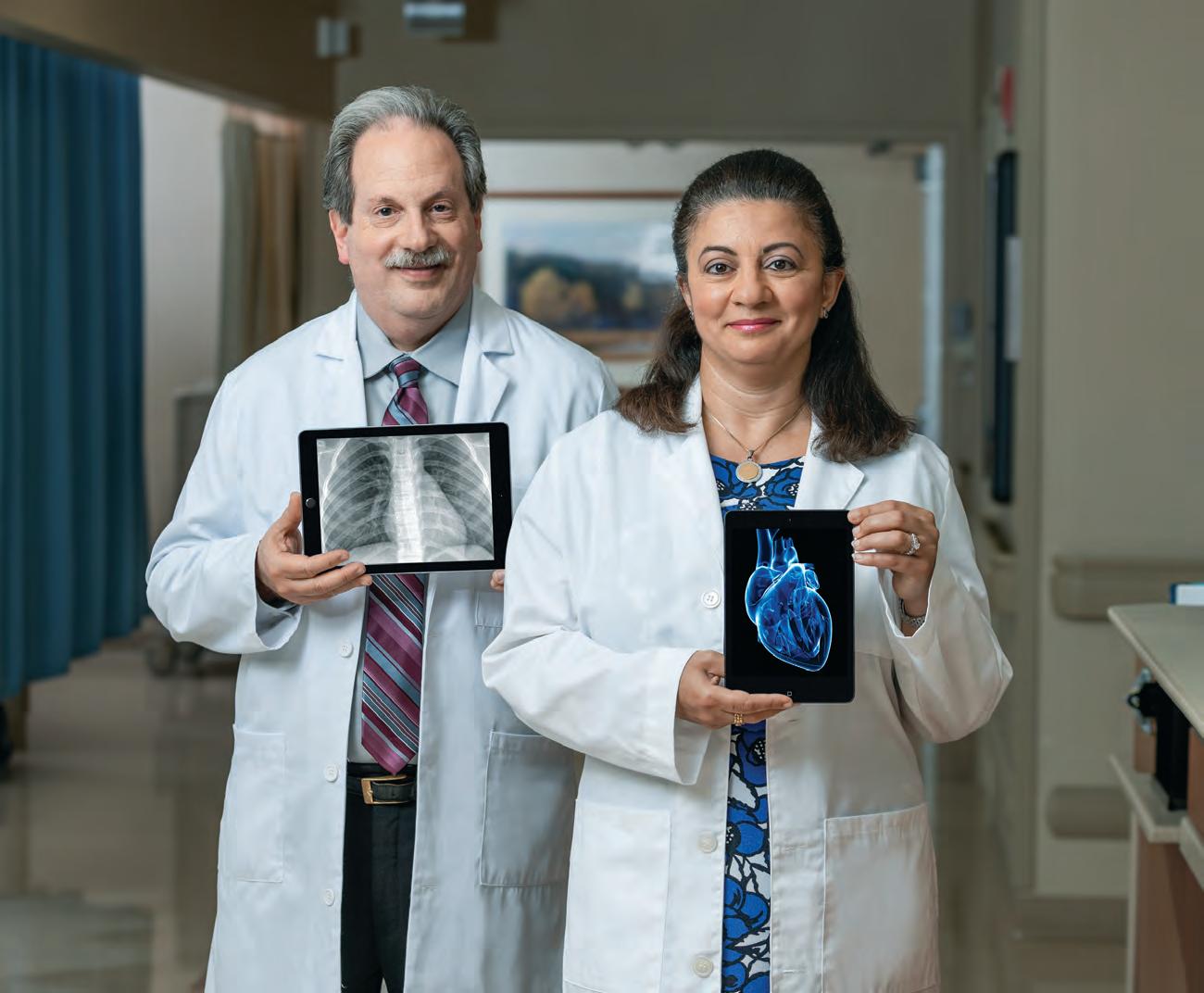
What does a plan for your heart look like? Let us show you.
Your heart is uniquely yours. At Texas Health Physicians Group, your heart and vascular care begins with a plan that’s customized for you. And with locations across North Texas, our care is close by. Schedule an appointment today, either in-person or via virtual visit, and discover our compassionate, comprehensive approach. From proactive prevention and diagnostics to advanced bypass and valve surgery and more, we’ll get you started with a plan for your heart health. And, as always, we have protocols in place designed around your safety. To learn more, go to TexasHealth.org/THPG-Safe.
Your heart is uniquely yours. At Texas Health Physicians Group, your heart and vascular care begins with a plan that’s customized for you. And with locations across North Texas, our care is close by. Schedule an appointment today, either in-person or via virtual visit, and discover our compassionate, comprehensive approach. From proactive prevention and diagnostics to advanced bypass and valve surgery and more, we’ll get you started with a plan for your heart health. And, as always, we have protocols in place designed around your safety. To learn more, go to TexasHealth.org/THPG-Safe.
Find your specialist today. 866-922-1076 | THPG.org/Heart
Find your specialist today. 866-922-1076 | THPG.org/Heart
Dear Olivia,
I am nervous having anyone come into our home during the current health environment and I suspect it may be this way for a while. How do we know when it is safe to use in-home care of any kind right now, especially hospice?
~How Can We Ensure Safety
Dear How Can We Ensure Safety, All patients and families should require anyone coming into their home is screened properly to ensure you are provided the safest care possible in such a tumultuous time. The CDC has issued clear guidance on how to screen both health care personnel and patients prior to providing any care. Patients and families/caregivers should be asked screening questions prior to visits so health care workers wear the appropriate personal protective equipment (PPE) for the situation. This may include a mask, gloves, gown, shoe covers and face shield or goggles and is worn to ensure the safety of your loved one and the health care worker.
Screening questions:
1. Has anyone engaged in international travel within the last 14 days to countries with sustained community transmission?
2. A re there any signs or symptoms of a respiratory infection, such as a fever, cough, and sore throat?
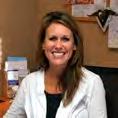
Olivia is a leading voice in health care and senior services and the Chief Nursing Officer of VNA Texas.
3. I n the last 14 days, has patient had contact with someone with or under investigation for COVID19, or are they ill with respiratory illness?
4. Does the patient reside in a community where community-based spread of COVID-19 is occurring?
It is also essential to ensure the health care workers are cleared before making a visit to your home. The CDC approved survey process for these workers is as follows:
1. Health care providers and volunteers who have symptoms of a respiratory infection should not report to work.
2. A nyone who develops symptoms of a respiratory infection while on the job should immediately stop work, put on a face mask, and self-isolate at home.
3. Health care workers should take their temperature twice a day and stay home with any abnormal temperature.
4. It is always appropriate to ask the health care worker to put on a mask prior to entering your home.
Strictly following these procedures will ensure that the community is preventing the spread of COVID-19 and necessary at-home care can be provided.
~Olivia
VNA Hospice Care focuses on living life to its fullest and treating you with the dignity and respect you deserve. As a nonprofit, our bottom line is patient support and care provided by our highly qualified staff.
Hospice & Palliative Care
vnatexas.org

Following the diagnosis of a life-limiting illness, patients and their loved ones have many questions about the best course of action. VNA Care Choices provides supportive care services in the home while continuing treatment with your current physician.
To schedule your free in-home informational visit please call (214) 535-2615 or email gethelp@vnatexas.org For volunteer opportunities please call (214) 689-2271 or email volunteer@vnatexas.org
Black, British, undeniably handsome, in interviews Idris Elba speaks with a proper English cadence that mesmerizes and intrigues. The celebrated actor is one of the UK’s greatest exports, an Officeof the Order of the British Empire (OBE), and a fiece advocate for diversity. The 48-yearold is also a multi-hyphenated talent whose skills behind the camera rival his acting chops.
The story of this actor, writer, producer, DJ, political activist, clothes designer, OBE, and (figers crossed) future James Bond, begins as the son of African immigrants in East London. Growing up black in hardscrabble Canning Town in the 1980s was an early, eye-popping education in racial injustice and inequality.
“If you were black and living in Canning Town, you were probably subject to racial abuse and getting chased down the street by people calling you a black coon,” Elba told Vanity Fair writer K. Austin Collins for an August 2019 cover story.
An only child, Elba was continually looking for things to entertain and ignite his interest. A drama teacher named Miss McPhee introduced Elba to acting when he was 13. A few years later, in 1990, he was awarded a grant by the Prince’s Trust to join the National Youth Music Theatre. Working under the name DJ Big Driis, he was a disc jockey during his late teens while he auditioned for acting roles. Elba scored small roles on British television, which fueled a desire to make it to the big screen in American theaters.
According to the aforementioned Vanity Fair article, Elba arrived in New York long before he was legally eligible to work in the States, hustling to get auditions.
“When I got to America and was like, I want to be an actor, I was like a novelty act in all my casting meetings,” he details about those early days. “ They were like ‘Wow! I love your accent, it’s so refied.’” He says they would then turn around and cast him as Gangster No. 1.
Ironically, before landing the pivotal role of fiancially savvy drug kingpin Russell “Stringer” Bell in the HBO crime drama The Wire, Elba was a bouncer (and pot dealer) at a comedy club on Broadway, occasionally living out of his Chevy Astro van, according to a New York Times article by Maureen Dowd.
When I got to America and was like, I want to be an actor, I was like a novelty act in all my casting meetings.





2019 Fast & Furious Presents: Hobbs & Shaw
© Warner Bros., Legendary Pictures
© Sony Pictures, Columbia Pictures

2016 100 Streets
© Warner Bros., Legendary Pictures
© Warner Bros., Legendary Pictures
© Warner Bros., Legendary Pictures
2011 Thor 2013 Pacific Rim 2017 The Dark Tower

© Twentieth Century Fox

Oh, and I’ll be the oldest DJ in the world!
“Really nice velvety seats,” he described to Dowd. “I miss that little thing. Honestly, if I found one, I’d defintely buy it and ship it back to France to my little house there.”
His iconic role on The Wire put Elba on skyward trajectory. Although his character didn’t make it out alive past season three of the five, his turn as a drug lord positioned Elba as a marketable actor.
From there, Elba’s resume filled out, much like his 6’3” frame. Among stints on sitcoms like Th Office and The Big C, he appeared in a mix of lead and supporting film roles in a variety of genres. He starred in Tyler Perry’s feature Daddy’s Little Girls, in the zombie-filled 28 Weeks Later, and in Obsessed opposite Beyoncé (yes, that one). He’s also done more than dabble in sci-fi, appearing in Marvel Comics’ Thor film as Norse god Heimdall, taken a turn in the Alien franchise’s Prometheus and been in Star Trek Beyond. Performances in Stephen King’s The Dark Tower (opposite Matthew McConaughey) and in the survival tale The Mountain Between Us with Kate Winslet are also on the list.
Elba didn’t leave the UK behind amid his success in America. His starring role as a driven detective in the acclaimed British psychological crime series Luther has earned him multiple Emmy Award nominations and a 2012 Golden Globe Award. The fih season of the series ended nearly two years ago but speculation of a spin-off movie are swirling.
“I’d love to see three or four Luthers come out as films, defintely,” Elba’s said in interviews.
His recent projects include Yardie, Elba’s directorial debut, Andrew Lloyd Webber’s Cats (the universally panned 2019 film adaptation, where Elba plays bad cat Macavity), and in Fast & Furious Presents: Hobbs & Shaw with Dwayne Johnson and Vin Diesel.
“I think when you’re looking for someone who can be a formidable adversary for Dwayne Johnson, that’s difficult enough,” said director David Leitch. “But then you’re looking for someone who can be a formidable adversary for Dwayne Johnson plus Jason Statham. That list gets really short.” Elba was the obvious choice.
Another role Elba seems particularly well suited for, James Bond. A few years ago Elba’s name flated around the internet as a replacement to Daniel Craig in the role of the iconic fitional British Secret Service agent who’s suave, yet deadly. It turned out to be a rumor that has dogged Elba ever since. “It’s interesting that the James Bond thing continues to go. I think it’s more about, we just want to have a
black guy play James Bond rather than Idris Elba the actor play James Bond. That’s the part that I’m like ‘Ugh, come on,’” he told Dowd.
With all these high profile roles, some of the high points of Elba’s career remain closer to his roots. He told Gentleman’s Journal that his portrayal of South African president Nelson Mandela in the film Mandela: Long Walk to Freedom and speaking in Parliament about diversity are among his most treasured. “I was so nervous but then I got there (Parliament) and spoke and it was an absolutely unbelievable feeling,” Elba explained.
Elba’s music success is yet another accomplishment in a long list of many. A celebrated DJ, Elba has performed at the much-vaunted Coachella and Glastonbury music festivals, completed a summer Ibiza residency in the Club Room, and has the distinct honor to have been personally asked to DJ at Prince Harry and Meghan Markle’s royal wedding by none other than the prince himself.
When he’s not acting, DJ’ing, speaking on diversity, or doing any number of side projects like designing clothing or showing up as People Magazine’s Sexiest Man Alive, Elba fids himself always drawn back to music.
“I do like music. I love listening to it, but I love making music. I fid it really therapeutic. Sitting in a studio with a musician and coming up with stuffis quite relaxing to me,” said Elba to entrepreneur.com.
As for what the future holds for Elba, he doesn’t intend to let age slow him down, not even for a minute.
“I never want to stop doing new things. But as I get older, I want to step behind the camera more and direct. I’m a bit torn about celebrities pushing political issues through their art but I’d like to use movies to convey a message in the way I know best,” he said in Gentleman’s Journal
“Oh, and I’ll be the oldest DJ in the world! I want to score my own movies. The idea that I could bring film and music together is amazing.”
It’s interesting that the James Bond thing continues to go. I think it’s more about, we just want to have a black guy play James Bond rather than Idris Elba the actor play James Bond.
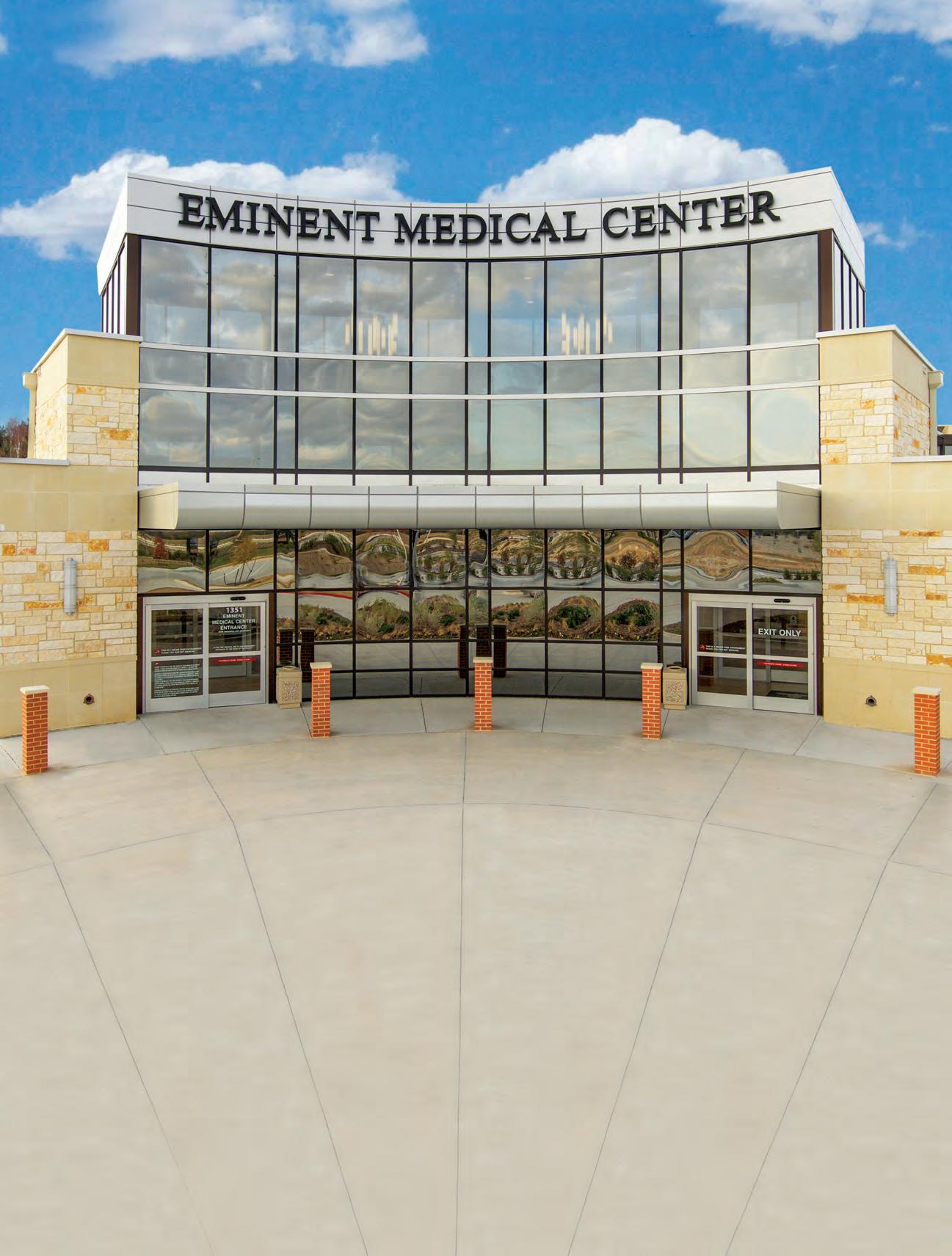

Pain Management • Sports Medicine • General Surgery
Spine Surgery • Orthopedic Surgery • Neurosurgery
Minimally Invasive Spine Surgery • Total Joint Surgery
Foot & Ankle Surgery • Hand Surgery
Gynecological Surgery • Plastic Surgery
Orthopedic surgeons and the medical staff at Eminent Medical Center are excited to offer Zimmer Biomet’s ROSA Knee System, which helps surgeons personalize surgical procedures for their patients.

Recognized by U.S. News and World Report as Best Nursing Home and Short-Term Rehabilitation Facility.
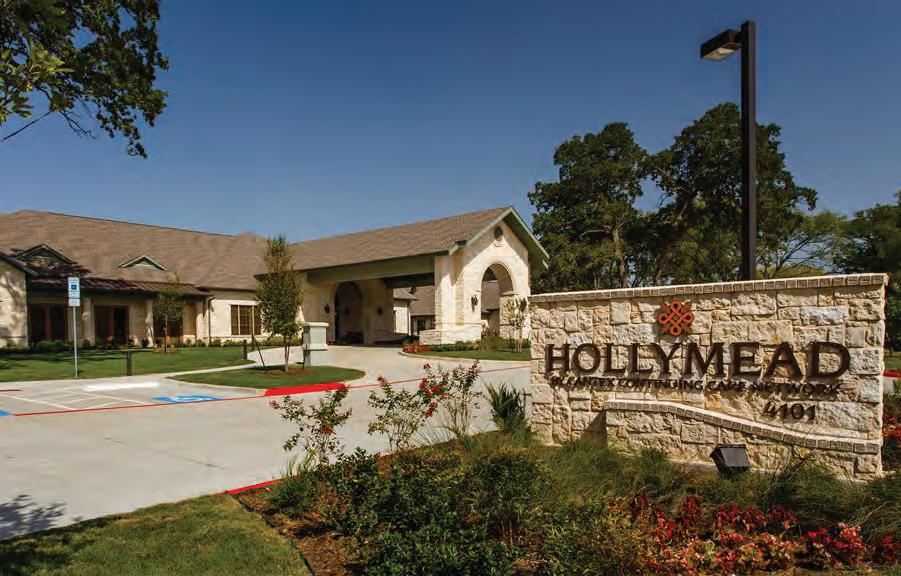
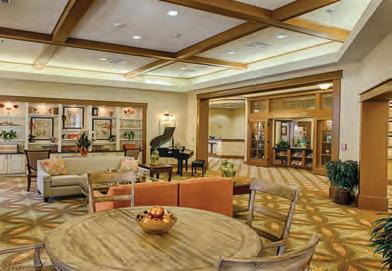
Amenities:
Continuing Care Network
been performing the highest standards of transitional healthcare and long-term residential services for more than 30 years. Ask anyone who knows. Cantex stands for quality.
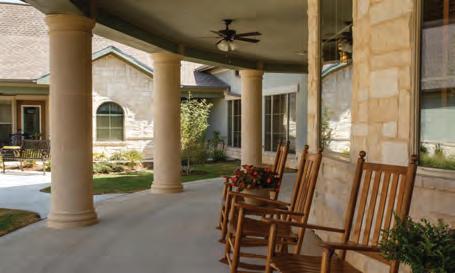
• Private and semi-private studios, some with kitchen elements and/or Frenchdoor courtyard patios
• Flat-Screen televisions
• 32 channels of satellite television service
• Wi-Fi internet access
• Electric beds for easy comfort adjustments
• Living room with fireplace and player piano
• Library with computer stations and complimentary internet access
• Chapel
• Neighborhood cafes with complimentary premium beverages and snacks
• Restaurant-Style dining room
• Beauty/barber shop with full-time beautician
• Activity program with community outings
• Sedan and van for resident transportation

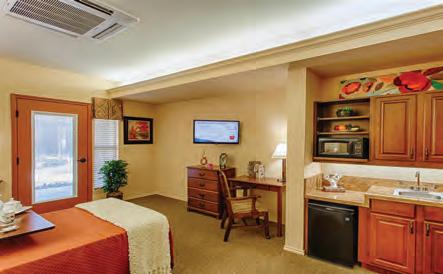
• Around-the-clock skilled nursing
• Physical, Occupational, and Speech Therapies
• Wound Management
• Intravenous Therapy
• Tracheotomy Care
• Physician Services
• Medication Administration
• Enteral/Parenteral Therapy
• X-Ray Services
• Laboratory Services



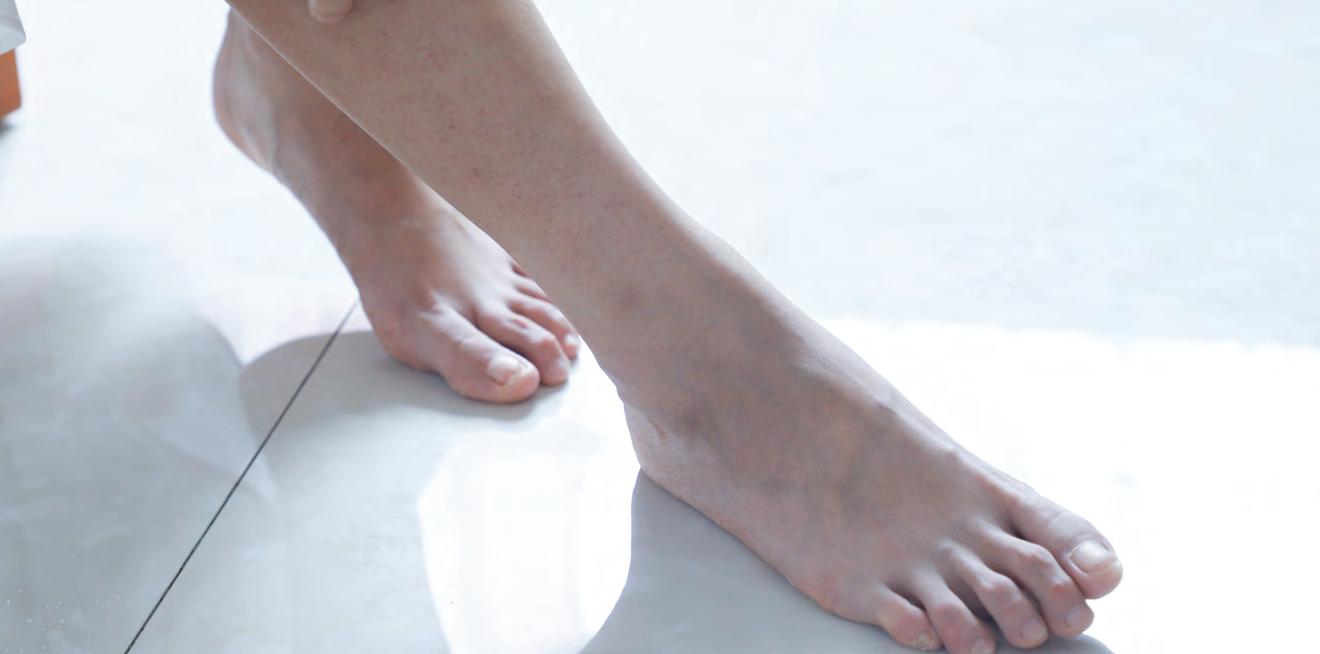
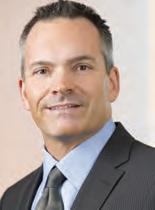
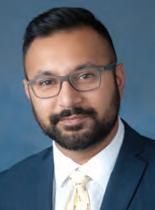
DPM, FACFAS, FAENS, FACCWS, CWS-P
American Board of Foot and Ankle Surgeons, and in Wound Management by the American Board of Wound Management, Dr. Dauphinée is esteemed as a trusted expert within the medical community. He lectures nationally and internationally, trains surgeons to treat a variety of peripheral nerve pathologies, and serves as faculty for multiple surgical workshops. He has been the recipient of numerous fellowships and awards, which have gained him respect from his peers and have provided unique opportunities to further study and successfully perform innovative procedures. He is the author of Saving Limbs Saving Lives: Advanced Treatments to Prevent Amputations in Diabetic Populations.
Dr Hussain ascribes to the simple philosophy that each patient is unique and deserving of individualized, attentive, and personable care.
Dr. Hussain received his formal education and training from some of the nation’s most distinguished podiatric surgeons, and is a contributing author to clinical research and medical textbook publications Highly knowledgeable and skilled in advanced treatment options, he demonstrates exemplary expertise both in podiatric medicine and in his exceptional and compassionate care for patients.
* Certified - Board Foot Surgery, Reconstructive Rearfoot/Ankle Surgery
† Board - Wound Management
Unexplained foot fractures may be the fist sign of osteoporosis, a bone thinning disease which affects over 28 million Americans and accounts for 1.5 million bone fractures a year.
According to North Texas foot and ankle surgeon Damien M. Dauphinée DPM, FACFAS, CWS-P, osteoporosis is frequently referred to as the “silent crippler” since it often progresses without any symptoms or isn’t diagnosed until a person experiences pain from a bone fracture. Dr. Dauphinée, a Fellow of the American College of Foot and Ankle Surgeons, explains that the porous nature of bones in people with osteoporosis makes them more susceptible to bone fractures, especially in the feet. “Because the bones are in a weakened state, normal weight-bearing actions like walking can cause the bones in the foot to break,” says Dr. Dauphinée. “In fact, many patients visit their foot and ankle surgeon suffering from foot pain only to fid out they actually have a stress fracture, without having experienced an injury.”
While osteoporosis is most commonly seen in women over age 50, younger people and men are also affected. Early symptoms can include increased pain with walking accompanied by redness and swelling on the top of the foot. “Often times patients don’t seek treatment for their symptoms for weeks or even months, thinking the pain will pass,” says Dr. Dauphinée. “ The best advice is, don’t ignore foot pain of any type. Early intervention can make all the difference in your treatment and recovery.”
Foot and ankle surgeons are able to diagnose osteoporosis through bone densitometry tests, which measure calcium and mineral levels in the bones through low-dose radiation x-ray, or possibly through a routine x-ray. “Ths is why prevention and early intervention are key; women should make sure bone densitometry tests are part of their wellness examinations when indicated by their primary care physicians,” Dr. Dauphinée explains.
If you are diagnosed with osteoporosis, it’s important to protect your feet from stress fractures. Wear shoes that provide support and cushioning, such as athletic running shoes, to provide extra shock absorption and protection. Custom orthotics may also be recommended to protect the foot from pressure and provide shock absorption, particularly during exercise.
For more information on osteoporosis of the foot, visit the American College of Foot and Ankle Surgeons’ website, www.foothealthfacts.org. For further information about ankle fractures and sprains or other foot and ankle problems, contact Dr. Dauphinée and Complete Foot and Ankle Care at 940-300-3054 or go to their website www.completefootandanklecare.com.
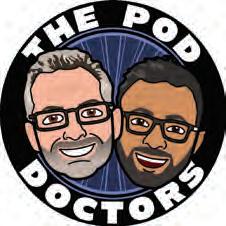
The POD doctors are Dr. Damien Dauphinée, double board certifid in Reconstructive Foot and Ankle Surgery and Wound Management and his partner Dr. Raafae Hussain, fellowship trained podiatric surgeon. Each week The POD doctors discuss various aspects of podiatric medicine and surgery to educate their audience on common foot and ankle problems and the latest treatment options available.
Dr. Dauphinée and Dr. Hussain started the podcast to provide valuable information to the community about common foot and ankle problems that they treat every day and some more unusual pathology that can be difficult to treat.
“We are really having fun with the podcast discussing foot and ankle surgery and mixing in interviews with colleagues in other specialties that can provide additional perspective on our patient population. Our secondary focus is to educate folks about the medical mission project we are involved in through the Texas Podiatric Medical Foundation which provides care to indigent patients. We started a Go Fund Me campaign for the Foundation through the podcast website and encourage our listeners to donate.” Courtesy COMPLETE FOOT AND ANKLE CARE
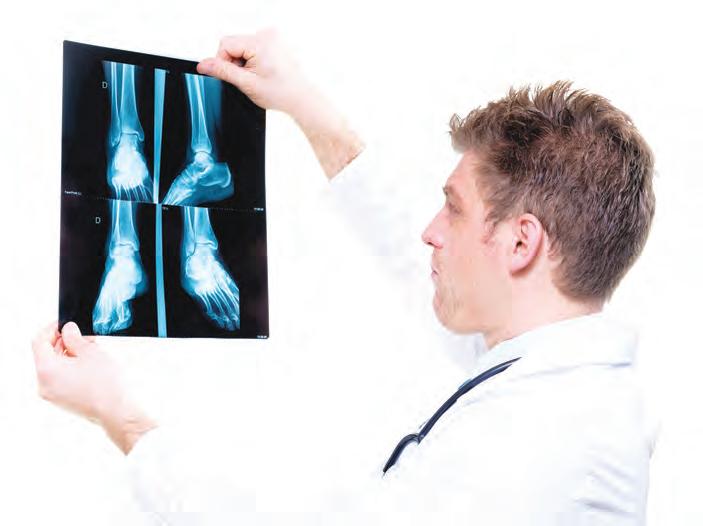
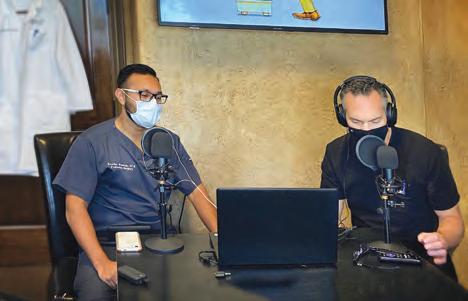
Humans are inherently social animals who rely on interpersonal relationships for a variety of needs. When people experience healthy friendships, family dynamics, and even casual positive interactions with others, they feel a sense of belonging and satisfaction, which translates to better health. Unfortunately, when your social connections and relationships don’t meet your individual needs, feelings of loneliness and isolation may occur and can have potentially devastating consequences.
How do loneliness and isolation affect physical and mental health?
Feelings of loneliness and isolation can signifiantly impact our health, especially when these feelings occur for an extended time. Unsatisfactory social relationships or connections can lead to a host of problems for both body and mind.
Physical health can be impacted by loneliness in surprising ways. According to the Centers for Disease Control in “Loneliness and Social Isolation Linked to Serious Health Conditions,” loneliness can signifiantly impact our health. It increases the risk for premature death, strokes, heart disease, heart failure, and other cardiovascular issues at levels comparable to those who smoke, are obese, or physically inactive.
Various studies have also shown correlations between loneliness or isolation and other complications, reports Amy Novotney in “ The risks of social isolation.” These include poor sleep, decreased self-control, higher stress levels, and lower immunity, to name a few
Mental health struggles can also develop from feeling isolated or lonely. Ths is true not only for adults but children and adolescents. On June 3, 2020, researchers published their fidings in “Rapid Systematic Review: The Impact of Social Isolation and Loneliness on the Mental Health of Children and Adolescents in the Context of COVID-19.” Maria Elizabeth Loades et al. found depression, anxiety, and even suicidal ideation and attempts are potential issues resulting from a lack of sufficit positive and healthy social relationships.
Among older adults, extended social isolation may even increase an individual’s risk for dementia or cognitive decline, according to a 2019 study, “Are loneliness and social isolation associated with cognitive decline?” by Elvira Lara et al
How are various demographics impacted by loneliness and isolation?
While all people require some level of personal connection and interaction, individuals and specificdemographic groups may have dif-
ferent needs or struggles related to loneliness and isolation. Anyone can, at times, experience isolation from others. Those who lack close family or friends, have moved to a new place, differ from their community, or belong to any kind of outgroup are at risk of missing out on their desired level of social connection. Certain groups, according to the CDC, are particularly at increased risk of experiencing isolation and loneliness.
Single parents may have children around, but that isn’t enough to prevent feeling lonely or isolated from adults. Parenting, even with a partner, already comes with these challenges. It can be exacerbated if you’re also dealing with a challenging co-parenting situation or experiencing a loss.
Seniors are a group signifiantly affected by social isolation. Experiences like divorce, becoming a widow or widower, children growing up and moving away, retirement, chronic illness, and moving to a retirement home or care facility can increase these feelings.
People with mental illness can have symptoms reappear or increase in severity if they don’t have access to a support network, including friends, family, or others to connect with.
Immigrants may face language barriers, differences in customs or local dynamics, or lack established social relationships. They may also feel incredibly lonely being away from their home, culture, or family.
Members of the LGBTQ+ community may be affected by discrimination and stigma. They may even experience loss of relationships with family and friends who don’t accept them, leaving them isolated from former social groups.
People with disabilities may experience increased isolation or feelings of loneliness depending on their individual situations. They may face barriers in communication, discrimination, stigma, or even physical impediments preventing easier engagement in social relationships.
How to reduce isolation and loneliness
Unfortunately, dealing with loneliness and isolation is becoming a widespread experience. According to experts, most people from all walks of life report feeling a lack of social connection or relationships at some point in their lives. Sometimes experiencing these feelings is a consequence of larger problems like a pandemic where people need to maintain distance to stay safe
Though it may seem impossible, isolation and loneliness do not have to become a permanent state. Even if you must be physically apart from others, there are many ways to stay connected and build new social relationships.
Even if you must be physically apart from others, there are many ways to stay connected and build new social relationships.
Reach out to friends, family, former coworkers, or neighbors who you haven’t talked to in a while or have lost touch with. Send an email, a letter, a text, or even pick up the phone and give them a call.
In situations like a pandemic, where physical distancing is necessary for a while, it’s crucial to find ways to connect with others. Try scheduling social time such as regular video calls to catch up and even share a meal, movie, game, or activity together from your own homes. Find ways to get together safely outdoors in small groups, appropriately spaced apart.
Technology opens up so many opportunities to make social connections and build virtual relationships with real people. You can join social networks and find groups for people in similar life situations, with similar interests, or just looking to connect with others. Just be conscious of how you’re using social media.
Seeing other people’s “highlight reels” can actually increase the feeling of being left out.

Join groups where you can connect with others through shared interests. A book club, cooking class, community college course, club sports team, fitness class, or community theater are a few possibilities. During a pandemic, look for virtual opportunities. It’s easier to maintain relationships when you have things in common— plus interest-based groups provide opportunities to connect with others in a structured but lower-stress environment.
Volunteer for a cause that’s dear to your heart. You can find others who share similar interests or values while gaining satisfaction from giving back to your community. Especially consider working with populations who are at risk for loneliness. This way, you can help others while helping yourself.
If you’re experiencing significant mental or physical health problems related to loneliness or isolation, speak with your doctor or mental health care professional. They can support you and direct you to various resources.
When feelings of isolation or loneliness become overwhelming, it’s hard to imagine how to change your circumstances. But with a little effort and perhaps some support, there are ways to create and maintain healthy social relationships and connect to others, regardless of our personal situation or the world around us.
HEALTHCARE AND OTHER
Dain B. Brooks, M.D. is a board-certified ophthalmologist, demonstrating that he has met the rigorous standards established by the American Board of Ophthalmology. You can trust him with every aspect of your eye care, from cataract surgery and premium lens implants, refractive surgery (including LASIK, PRK and ICL) to longterm eye disease management and dry eye treatment.
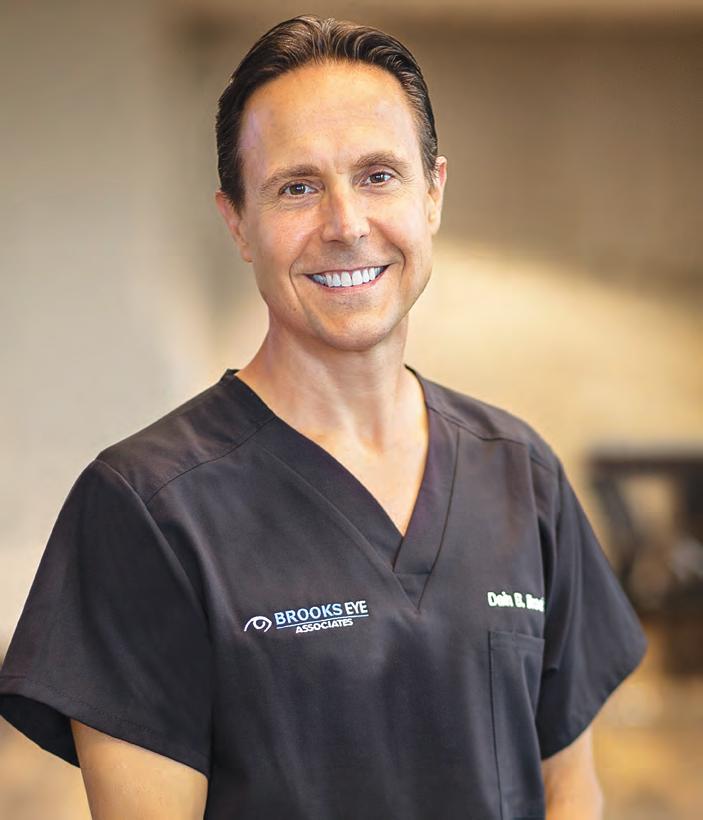
After graduating with honors (Alpha Omega Alpha) from the George Washington University School of Medicine in 2002, Dr. Brooks went on to complete his ophthalmology training at Walter Reed Army Medical Center. During his training and at subsequent Army medical centers, he had the honor of treating eye injuries suffered by soldiers in the Iraq and Afghanistan wars.
Dr. Brooks was selected as Faculty Member of the Year in 2009 by the San Antonio Military Ophthalmology Residency Program. In addition to his numerous awards and recognitions, Dr. Brooks’ work has been published in several national and international clinical journals.
As part of his commitment to staying on top of the latest developments in ophthalmology, Dr. Brooks is a member of the following professional organizations: American Society of Cataract and Refractive Surgeons, American Academy of Ophthalmology and Texas Ophthalmological Association.
Dr. Brooks is married with four children and enjoys traveling with his family, biking, tennis, and community service in his spare time. He also frequently participates in international cataract surgery medical missions and is fluent in Spanish. Whenever possible, Dr. Brooks enjoys participating in cataract surgery medical
missions to meet the needs of people without direct access to advanced eye care in other countries. He teams with several Faith-Based and humanitarian organizations to provide care in an effort to preserve and restore sight for individuals in underserved nations and communities at home and abroad.
Dr. Brooks is truly honored to provide his surgical skills on these mission trips and looks forward to future opportunities to provide needed services to those in need throughout the world. His missions have included trips to Honduras, Ecuador, Guatemala, Mexico, India and The Cornerstone Assistance Network providing care to underprivileged patients throughout North Texas.
Dr. Brooks has been in private practice in North Dallas and Plano since 2010. He has made it his mission to provide patients at Brooks Eye Associates with a premium experience delivering the highest quality medical and surgical eye care.
Brooks Eye Associates utilizes the latest in technology and techniques from the initial exam all the way to the patient surgical experience in their own onsite two-room ambulatory surgery center. They focus on treatment and prevention.
“We know that monitoring your eye health through comprehensive exams is the best way to ensure your vision
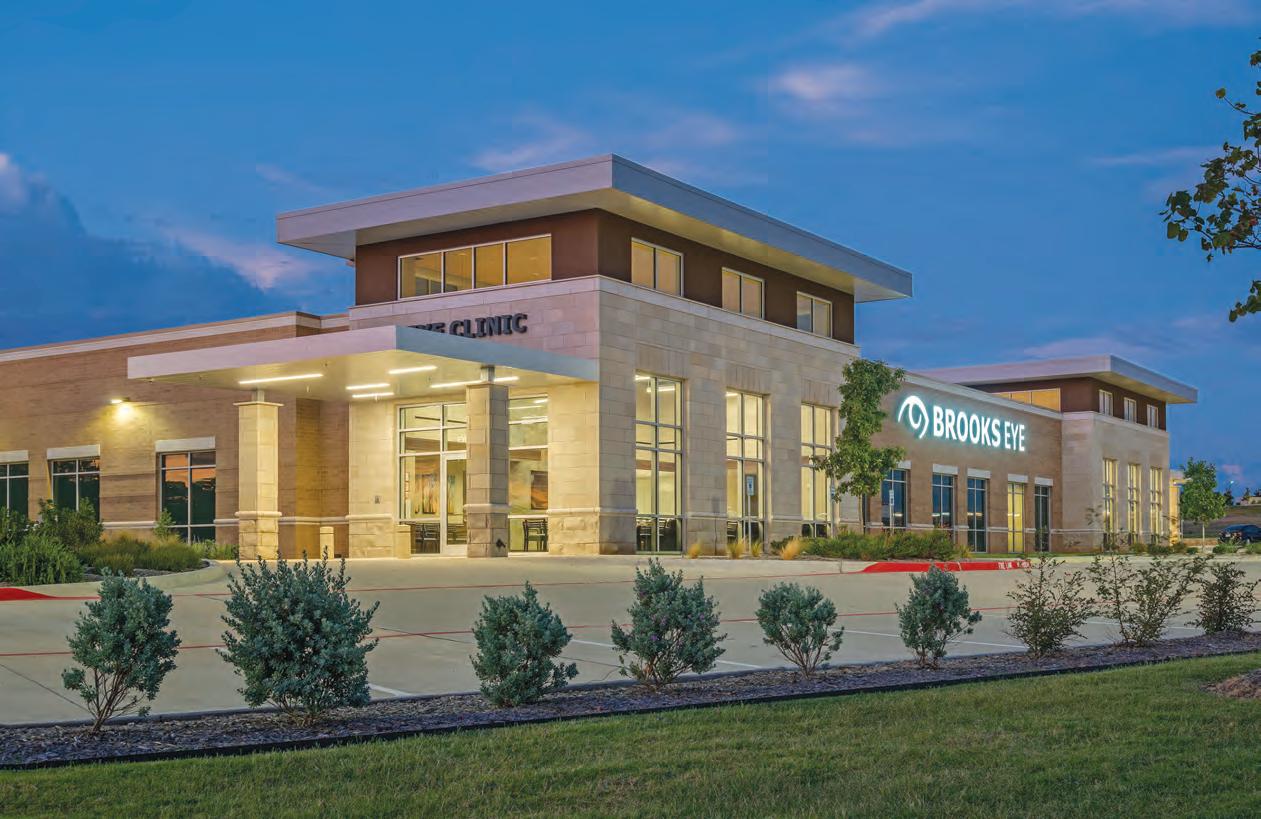
is protected well into the future. If you are suffering from an eye disease, our caring staff optometrists will carefully diagnose your condition to determine the best approach for treatment. If you have a refractive disorder, we can provide an effective solution to restore your vision,” says Dr. Brooks. At Brooks Eye Associates we strive to make patients’ visits as comfortable as possible, welcoming each individual into a caring, secure and attentive environment. Brooks Eye Associates works collaboratively with a network of caring and dedicated clinicians with the central goal of providing the quality and compassionate eye care that our patients deserve. We strive to consistently improve our ability to serve our patients and surpass each of their expectations. Within the past four years patients have made it known they feel Brooks Eye Associates has accomplished this mission by nominating Dr. Brooks as best
Ophthalmologist in the area in many patient poll platforms. Having the experience, skill, and technology necessary to provide exceptional eye care is one thing. Giving patients the individualized attention they deserve is another. The entire medical care team at Brooks Eye Associates is committed to providing you with the best patient experience and vision outcome possible. During each visit, you can rest assured that we will spend quality time with you to make sure all of your questions and concerns are addressed so that you fully understand the next step in your vision care process. If you live in Plano, Frisco, or the Dallas area and are looking for an experienced ophthalmologist and medical care team you can trust, please contact Brooks Eye Associates today at (214) 758-7941 to schedule an appointment. We look forward to meeting you and working with you to restore your vision!


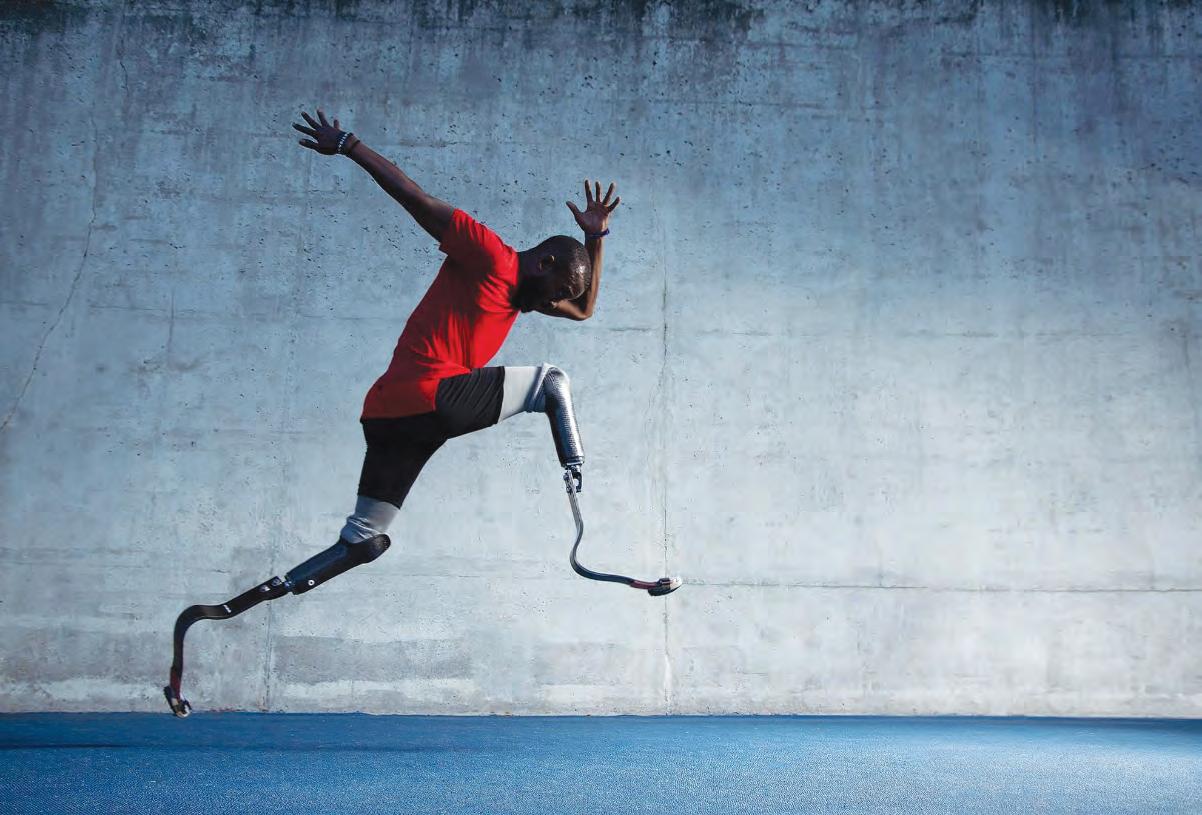
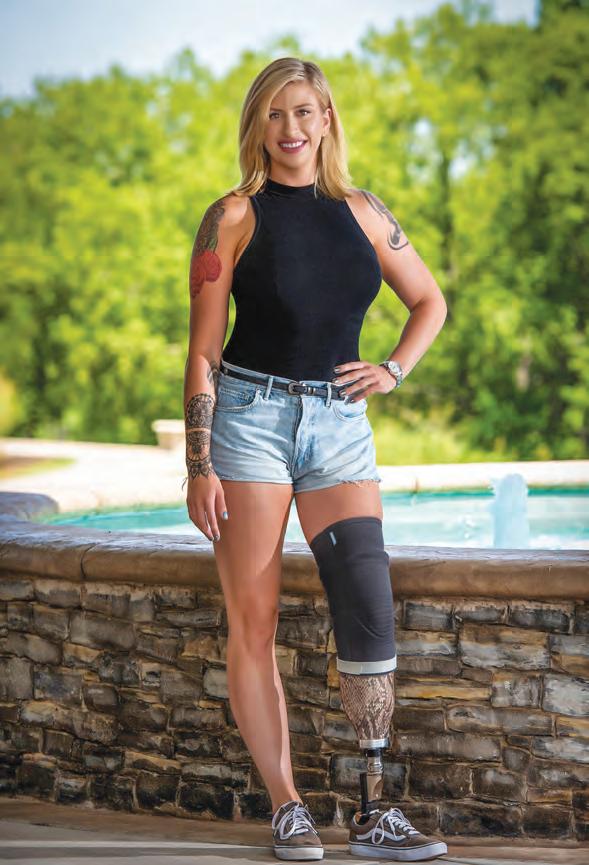
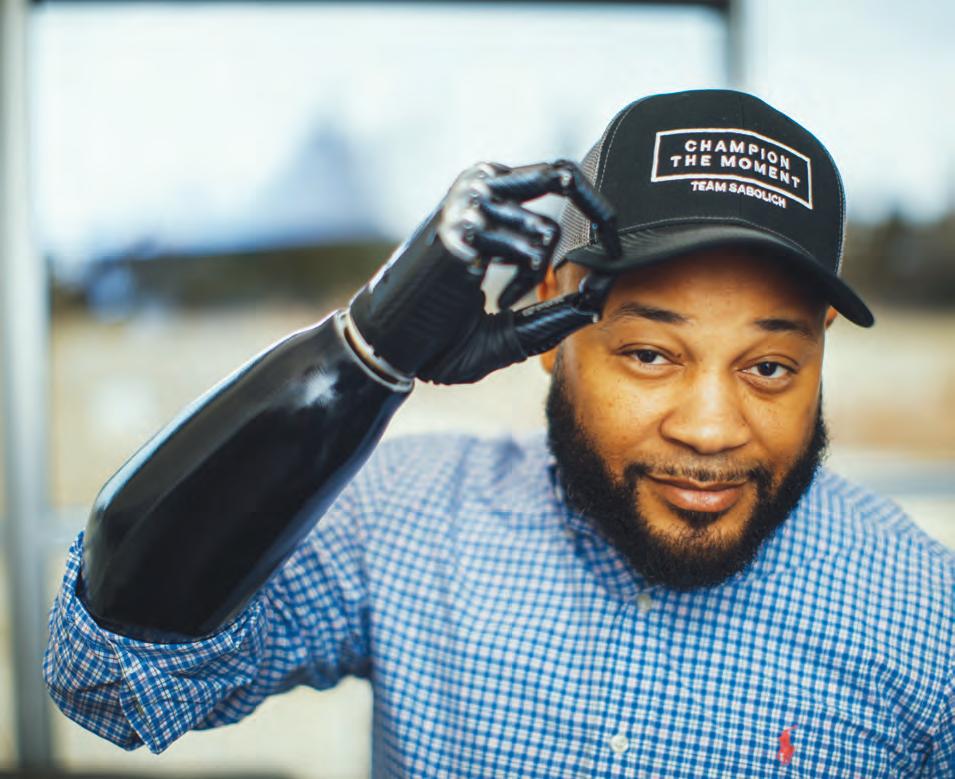


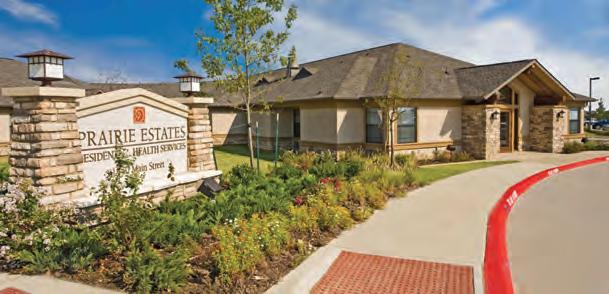
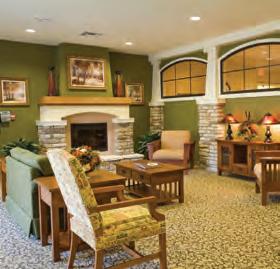



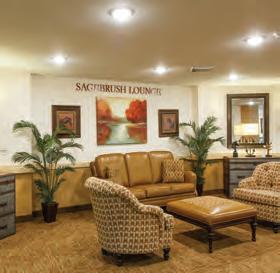
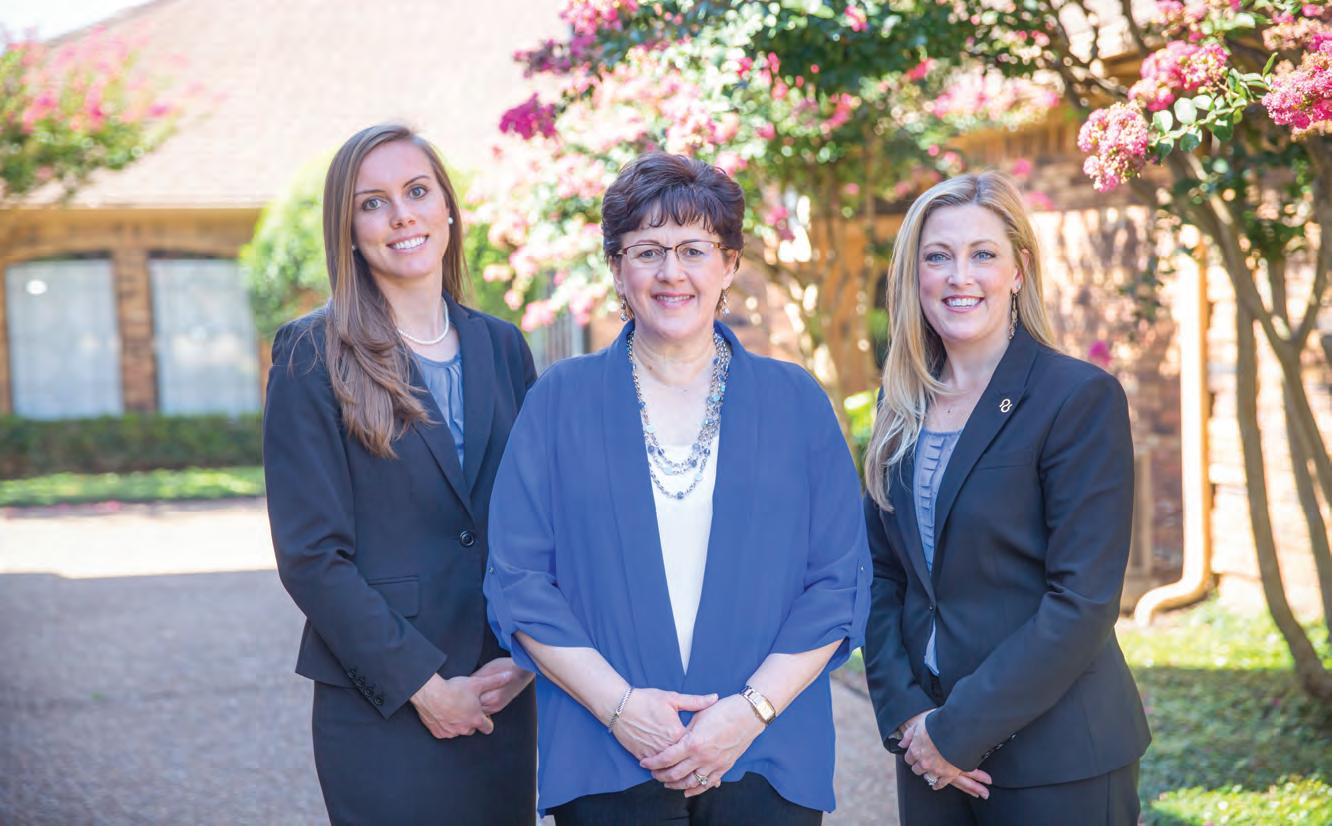

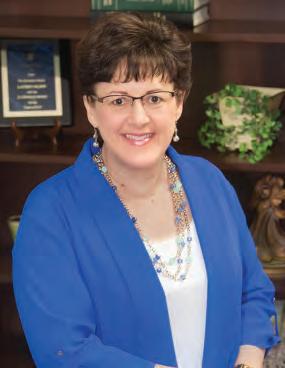



The holiday season is a time for reconnecting with loved ones and reminiscing about fond memories. For those of us with aging family members, we now fid ourselves with additional concerns about their wellbeing, because our mere presence with them could put them at risk of contracting the COVID-19 virus. Because families often live far apart, we look forward to the holidays to get together and check in on each other. Ths year, however, many families will choose not to gather, in an effort to protect each other and, in particular, their older family members who are at greater risk of harm from the virus. Communications may be limited to telephone calls and, for those who can accomplish it, video conferences by computer. However you can manage it, discussions about planning for the future are very important in these uncertain times.
While many people think only of a Will when contemplating the legal documents necessary to protect their future, there are more documents and considerations in developing a wellrounded estate plan. A basic estate plan should include the following documents:
• Statutory Durable Power of Attorney
• Medical Power of Attorney
• Directive to Physicians and Family or Surrogates (Living Will)
• Authorization to Release Medical Information (HIPAA Authorization)
• Declaration of Guardian
• Will
Although often overlooked, the Statutory Durable Power of Attorney and Medical Power of Attorney are critical parts of longterm care planning that enable your loved one to designate who will act for them if they are unable to handle their own fiancial and healthcare decisions. Encourage your loved one to appoint who they trust to handle their affirs now, as well as in the future. Sometimes people appoint family members as agents to keep affirs private and avoid hurting feelings, but a family member may not always be the best option. In all cases, signing estate planning documents should be done only after deep reflction regarding the abilities and trustworthiness of each agent. Healthcare has become one of the most confusing and uncertain issues seniors face as they age. Ths is especially true when it comes to preparing for the cost of funding long-term
care. Long-term care differs from other types of healthcare. The goal of long-term care is not to cure an illness, but to allow an individual to maintain an optimal level of functioning. There are a wide range of choices for seniors, from independent to assisted living to skilled nursing facilities. Some people want to stay in their homes as long as possible and bring in outside help to make that possible. Others want the freedom from home maintenance that a senior residence community offers. There exists a longstanding myth that Medicare will pay for all healthcare needs of seniors, including long-term care. The reality is that Medicare provides support only in limited situations. Medicare does not pay for assisted living, memory care, or long-term custodial care in skilled nursing facilities.
Some people are fortunate to have the ability to private pay for long-term care, which ranges from $3,000–$16,000/month in the Dallas-Fort Worth area. Others have long-term care insurance to pay for care. Because long-term care insurance may not be available for individuals with certain existing health problems, it is important to investigate the availability of long-term care insurance as early as possible. If your loved one cannot qualify for long-term care insurance, there are fiancial options that may fit their circumstances and provide similar coverage. All individuals approaching retirement age should have a plan in place for funding their long-term care needs.
Do not put offdiscussing these issues with your family. Most professionals have put special pandemic procedures in place to allow communications, and even the signing of documents, while keeping everyone safe from the risk of the virus. Encourage your loved ones to seek qualifid professional advice on legal documents, healthcare, insurance, and fiancial planning. Professionals, such as Elder Law attorneys, who work primarily with seniors, are attuned to the complex fiancial and social decisions their clients face. Additionally, they can often provide connections to a community of support agencies and organizations, such as geriatric care managers, psychologists, and other professionals who may be of assistance to seniors and their families. Talking about these issues with your aging loved ones now can help ensure they will have what they need to provide for their care in the New Year, and for many years to come.
Lori Leu, Erin Peirce, and Lauren Olson are Elder Law attorneys with Leu & Peirce, PLLC located in Plano, Texas. They can be reached at 972-996-2540 to answer questions you may have about supporting your aging loved ones.

























Avery large sports apparel company coined the phrase “Just Do It” a while back and although simple, the depth of the message is phenomenal. People have found inspiration in that simple message and have overcome obstacles and hurdles in their everyday lives and have accomplished great things from starting their own companies to losing weight and improving their overall health. If you have a “thinker” style of communicating, like I do, you probably struggle with simple things. When asked what time it is, you answer with detailed instructions on clock building. My wife is constantly reminding me to just get to the point. So, the concept of simple things not only works well, it is often preferred by many.
In decision making regarding funeral services, this is where many people, at least nowadays, are getting derailed. The sheer complexity of the task can be more than what most people think they can handle. Especially, when this overwhelming task is a need resulting from the loss of someone you love. Ths is where funeral directors come into play. It was once estimated that the number of decisions and details needing to be addressed in funeral planning are similar to those a bride and groom make when planning their wedding. The huge difference is a wedding coordinator has several months in which to pull the numerous details together. The funeral director must make this happen in a matter of a few days. Because of this, many people are choosing to go a simpler route in honoring the life of their loved one. Some people are even going to the extreme of doing nothing more than the very minimum that is required and forego all else. The purpose of this discussion is not to cast judgment on the choices people make, but rather to encourage people to “just do something.”
In a previous article regarding the practice of viewing the body of a loved one, the comparison was made between people who do not view and those whose loved one is declared dead, but a body never found. Closure is often so difficult when the opportunity to say good-bye is diminished or eliminated altogether. Ths can hold true for the lack of some sort of tribute as well. Denial that a death

has occurred is one of the phases of grief. There are other phases of grief as well, and unless a person can face and deal with each phase, it is difficult, if not impossible, to ever reach the fial phase of grieving: acceptance and reconciliation. It can appear that attempting to ignore a death by refusing to conform to any of the customs surrounding funerals, one can just skip the process of grief and go on with their normal life as if nothing has happened. In our crowded schedules and busy lifestyles, not stopping to grieve and say good-bye may seem like the most sensible thing to do. Ths will appear true until at some point down the road anger, guilt and the other phases of grief arrive and the person who has experienced the loss wonders why they just can’t seem to get on with their life.
As difficult as it may seem at the time, it is absolutely necessary for the family of a person who has died to seek the advice of a funeral director and work together to create something that is meaningful, appropriate and affordable that will enable family and friends to come together, share their grief and say good-bye. It does not have to be elaborate nor even traditional for that matter. It just needs to be something. A great example of this concept is the experience of a family we recently served. The person who died was cremated and a funeral service was going to be held in another state at a later time. However, many friends here needed to have something, especially since they could not travel to the site of the funeral. So, an evening of remembrance was scheduled at the funeral home. Ths event resembled a reception with mementos, photos and refreshments out for those attending. Although it was very evident that a death had occurred, the atmosphere was light and every person who came was grateful the spouse had considered them in planning the event. While it appears to be easier to do as little as is required, or even nothing at all, consider the potential good that can come from just doing something.
Rick Allen has been the owner of Allen Family Funeral Options for over 35 years and may be reached at 972-596-8200, or you may visit their website at www.AFFOplano.com.
PHOTO BY TINA WITHERSPOON
If you have been diagnosed with osteoporosis (low bone density) and have also tried treatments like rest and oral medication for more than a few days and still have sharp back pain, you may have a spinal fracture, also known as a vertebral compression fracture (VCF).
Balloon kyphoplasty (BKP) is a treatment for spinal fractures due to osteoporosis, non-cancerous tumors, and cancer. BKP has been shown in clinical studies to alleviate pain and reduce prescription opioids, compared to patients treated with non-surgical management, such as bracing and bed rest.1-3
While not all treatments have the same benefits for everyone, talk to your doctor about your options and whether BKP may be an option for you.
Although the complication rate for balloon kyphoplasty is low, as with most surgical procedures, serious adverse events, some of which can be fatal, can occur, including heart attack, cardiac arrest (heart stops beating), stroke, and embolism (blood, fat, or cement that migrates to the lungs or heart). Other risks include infection; leakage of bone cement into the muscle and tissue surrounding the spinal cord, and nerve injury that can, in rare instances, cause paralysis; leakage of bone cement into the blood vessels resulting in damage to the blood vessels, lungs, and/or heart.
3.
2009;373(9668):1016-1024.
2013;38(12):971–983.
Sharon fist noticed the pain in her back one day. “I thought I had a sprain, you know, ‘It’ll go away,’” says the 72 year old grandmother from Fort Worth. Then one night she rolled over in bed and felt a pop. “I waited a while. I just thought the pain would go away, and it didn’t.”
Sharon eventually went to the emergency room at Harris Methodist Hospital, and doctors did some tests that found the cause of her pain: multiple myeloma, a type cancer that attacks the bone marrow. She had pathological fractures in two of the vertebral bodies of her spine—in other words, a broken back. Sharon was treated for her cancer with chemotherapy and a stem cell transplant, and she took opiod pain medication for the lingering pain in her back.
“I still had the pain. It just didn’t go away,” she recalls. “ There was a lot I couldn’t do. Just bending or rolling over in bed was a major ordeal.” Once Sharon was in remission, doctors referred Sharon to Dr. Irfan Ali in Flower Mound. Ali recommended a minimally invasive surgical procedure called Balloon Kyphoplasty to repair her damaged spine and relieve her pain.
Balloon Kyphoplasty is a minimally invasive procedure for the treatment of spinal fractures due to osteoporosis, cancer, or non-cancerous tumors. Guided by live imaging, Ali created two tiny openings in Sharon’s back at each fractured level and used a needle to insert a tiny balloon into the damaged vertebra. He then inflated the balloon to restore the original height of the vertebrae. Finally, he injected acrylic bone cement into the cavity leftby the balloon, creating an internal cast to repair the fractures.
After the procedure, which takes typically less than an hour, Sharon was able to leave the hospital and go home the same day. “She’s doing great,” Ali says. Sharon says she no longer takes pain medication for her back. “By the next day, where the fracture was, I could tell a difference there. It was just a true blessing.” She was even able to attend her grandson’s junior high football game the night of the procedure.
“I asked Dr. Ali, and he said if I felt like it, I could,” Sharon says. “So I went home and changed my clothes and went to the football game that night. As a matter of fact, I usually would try to fid a place down low in the stadium so I wouldn’t have to climb steps, but this time I went all the way up and sat halfway up in the bleachers, so that was really nice!”
Medtronic developed balloon kyphoplasty, a minimally invasive procedure that reduces and stabilizes VCF related to osteoporosis, cancer or non-cancerous tumors. Since the initial technology launched in 1998, Medtronic has developed better balloons, an improved cement delivery system and added access tools shown to reduce hand radiation exposure for the surgeon. Over the years, studies comparing balloon kyphoplasty to non-surgical management have shown balloon kyphop lasty produced better pain relief and quality of life for patients with acute VCF compared to patients treated with non-surgical management.
Although the complication rate for BKP is low, as with most surgical procedures, seri ous adverse events, some of which can be fatal, can occur, including heart attack, cardiac arrest, stroke, and embolism. Other risks include infection; leakage of bone cement into the muscle and tissue surrounding the spinal cord and nerve injury that can, in rare instances, cause paralysis; leakage of bone cement into the blood vessels resulting in damage to the blood vessels, lungs, and/or heart.
Talk to your doctor about both benefits and risks of this procedure. A prescription is required. Results may vary. For more information, please call Medtronic at 763-505-5000 and/or consult Medtronic’s website at www.medtronic.com or spine-facts.com.
The following testimonial contains the opinions of and personal surgical techniques practiced by Irfan Ali, M.D. The opinions and techniques presented herein are for information purposes only and the decision of which techniques to use in a particular surgical application should be made by the surgeon based on the individual facts and circumstances of the patient and previous surgical experience.

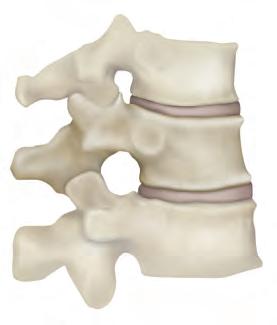
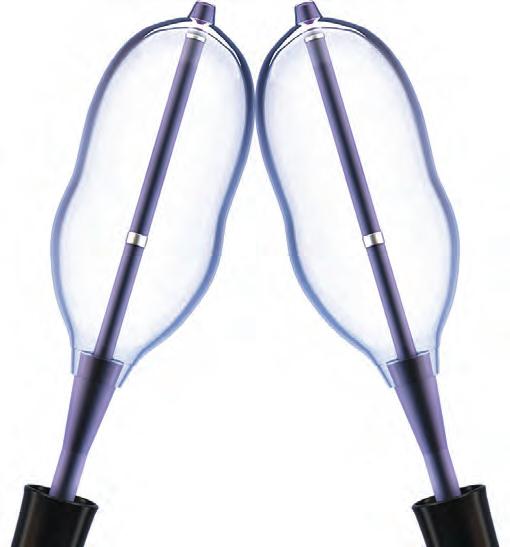

Over the past year, most people have noticed how truly unpredictable life can be. While it’s impossible to predict what the next few months have in store, practicing a few fundamental fiancial skills can help you and your family prepare for whatever comes next.
“According to a survey by Bank of America, 42% of Americans say their top fiancial goal over the next three months is to increase their savings,” says April Schneider, head of consumer and small business products at Bank of America. “ The pandemic has highlighted the importance of building a safety net. Whether you’re looking to improve your current fiancial habits or starting from scratch, the most important thing is to make a plan that fits your needs and to stick with it.”
Consider these tips from Schneider:
Track your expenses. Review your expenses, big and small, and separate them into categories like groceries, transportation, utilities and entertainment. Then total the amounts in each category to get a better picture of your monthly expenses. Knowing how much you spend each month is the fist step toward fiding money to save.
Make a plan and set a budget. Categorize your expenses into wants versus needs. Groceries, rent and mortgage payments are examples of needs while streaming services are a want. Compare your expenses against your total household income to fiure out if you have money leftover to save or if you can fid money to save by reducing your spending on nonessentials. For example, keep an eye out for phantom charges—or reoccurring payments—you may no longer need and redirect that money into savings.
“If you’re already saving, that’s great,” Schneider says. “Review your behaviors and see if there’s room for improvement. It’s also not too late if you haven’t begun saving—everyone has to start somewhere.”
Also keep in mind your budget is meant to adapt with your circumstances, so make sure you’re updating your budget as your life changes.
Make savings automatic. Saving can fit seamlessly into your everyday life when you set up automatic transfers from a check-
ing to a savings account. Take a look at available tools for other ways to save, like the Keep the Change program, which rounds the change up to the nearest dollar for everyday purchases you make with a Bank of America debit card and transfers the difference to your savings account. Saving automatically helps prepare you for the future without adding to your to-do list. You can start small by automatically transferring a few dollars each week.
Build an emergency fund. Take a look at your current expenses versus total income to identify any extra wiggle room where you can save. Next put your emergency savings in a separate, but accessible, account to avoid temptation and accidental overspending.
“When building an emergency fund, I recommend saving enough money to cover three to six months of expenses,” Schneider says. “Contributing to an emergency fund keeps saving a priority and ensures you have fiancial flexbility should the unexpected occur.”
Use spending tools for savvy savings. Being a better saver means becoming a smarter spender. While looking for deals and price shopping can be helpful, there are times when it’s better to spend a little more for quality. For example, buying a more costly refrigerator may pay offin the long run compared to buying a cheaper option that could break down after a few months.
Another way to be a smarter spender is by earning rewards on your everyday purchases. Whether you’ve seen your costs shift from in-person to delivery services, using a card that adapts and rewards your spending can be a valuable asset. With an option like the Bank of America Cash Rewards credit card, you can earn 3% cash back in a category of your choosing, such as dining, and redeem rewards in a way that’s best for you. For example, according to survey data, the average customer spent $172 on food or delivery services in July 2020—up 63% from the previous year. As a Preferred Rewards member, you could boost your credit card rewards by 25 to 75%. Simply by redeeming your rewards into your Bank of America savings account, you can put more money away for the future by making everyday purchases. While you may not know what the future holds, planning and actively taking steps can help you feel more secure and prepared for whatever it brings. Find more tips at bettermoneyhabits.com.
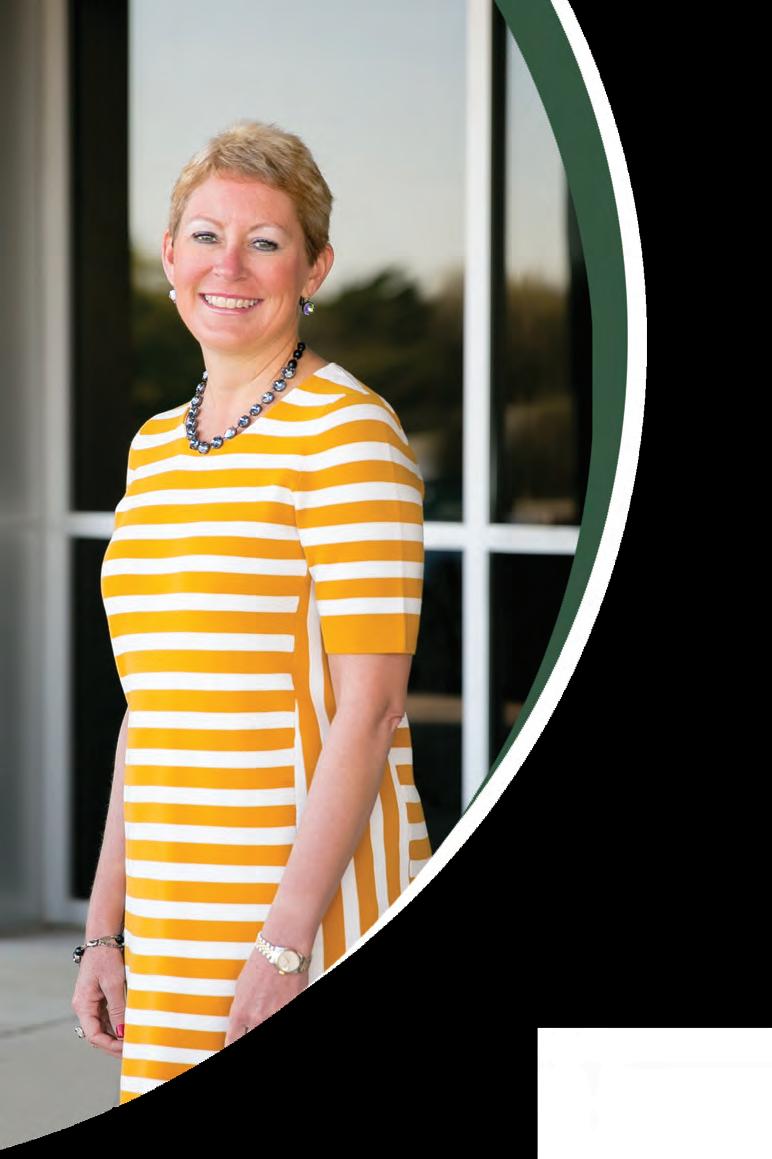
•Sta ed by 2 Licensed, Doctors of Audiology
•Hearing Aid Fittings, Maintenance and Repairs
•Wireless/Connectivity Hearing Solutions
•Invisible Fittings/Open Fittings
•Evaluation Period On All Hearing Aids
•Hearing Evaluations For All Ages
•Battery Purchase Programs
•Custom Ear Protection
•Assistive Devices
•30 Years of Experience
“Hearing Services of Mckinney is my #1 place to go for my hearing loss needs. Caring and dedicated professionals with many years of experience working daily to meet your needs” .
–Terry G. Bo x, R etired Collin County Sheri˜
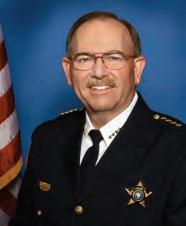

We think of the obvious effect of hearing loss with regard to communication difficulties. However, your hearing health contributes to your overall well-being and quality of life. Statistically, hearing loss is the third most prevalent chronic condition in older Americans after hypertension and arthritis. Aging also brings cognitive processing deficts that interfere with communication and can create distractions that lead to memory loss, falls and other accidents. Let’s examine these effects.
Memory and Hearing Loss: Adults with hearing loss are more likely to develop problems thinking and remembering than adults with normal hearing. Also, adults with hearing loss develop a signifiant impairment in their cognitive abilities 3.2 years sooner than those with normal hearing. It’s believed that untreated, degraded hearing may force the brain to devote too much of its energy/resources to processing sound.
Dementia and Hearing Loss: Seniors with hearing loss are signifiantly more likely to develop dementia over time than those who retain their hearing or treat their hearing loss. It appears that this effect increases as the amount of hearing loss increases.
Falling and Hearing Loss: People with mild hearing loss are three times more likely to have a history of falling. Each additional increase of hearing loss by 10 decibels increases the chance of falling by 1.4 times the original risk.
Mental Health and Hearing Loss: Hearing loss results in social isolation. Adults with untreated hearing loss tend to withdraw from engaging with family and friends. They are also likely to report depression, anxiety, anger and frustration. The degree of depression or
other emotional or mental health issues also increases with the severity of the hearing loss.
Tinnitus and Hearing Loss: Tinnitus or “ringing in the ear” affects up to 50 million Americans. Ninety percent of people with tinnitus also have hearing loss. The most common causes of tinnitus are: noise exposure, aging, head injury and medication side effects.
Income and Hearing Loss: Statistics show that people with untreated hearing loss lose up to $30,000 annually. Adults with hearing loss, who wear hearing aids, have a lower unemployment rate than those who don’t.
So, hearing loss can affect your life in many ways. You may miss out on talks with friends and family. Sometimes hearing problems can make you feel embarrassed, upset and lonely. It’s easy to withdraw when you can’t follow a conversation. It’s also easy for friends and family to think you are confused, uncaring or difficult when the problem may be that you just can’t hear well.
We often get asked in our officby friends and family, especially when fitting a new patient with hearing aids, how to best communicate with them. So, we thought we’d share some tips on best communicating with a hearing impaired person.
• Face the person and talk clearly (not while walking away from patient or while looking in cabinets, refrigerators, etc).
• Speak at a reasonable speed—often slowing down how you speak is more benefical than raising your voice.
• Do not hide your mouth (so much speech information comes from nonverbal cues and facial expressions) or talk while eating or chewing gum.

• Stand in good lighting.
• Reduce background noises.
• Use facial expressions or gestures to give useful cues.
• Repeat yourself if necessary, using different words.
• Include the hearing-impaired person when talking. Talk with the person, not about the person when you are with others. Ths helps keep the person with hearing loss from feeling alone and excluded.
• Be patient; stay positive and relaxed.
• Ask how you can help!
Also important, here are some tips of what the hearing impaired person can do to improve their communication with hearing aids:
• Let people know that you have difficulty hearing.
• Ask people to face you and to speak slowly and clearly. Ask them to speak without shouting, which can just distort the speech signal.
• Pay attention to what is being said and to facial expressions or gestures.
• Let the person talking know if you do not understand.
• Ask people to reword a sentence and try again.
• Turn off ny unnecessary, extraneous noises (such as the radio while in a car, television at home, etc.).
• Wear your hearing aids consistently!
To hear better, is to live better! Start a better health and wellness conversation today! Better hearing health is possible! Call your audiologist today!

PEDICURES
Ranging

Extended hours available by appointment only.



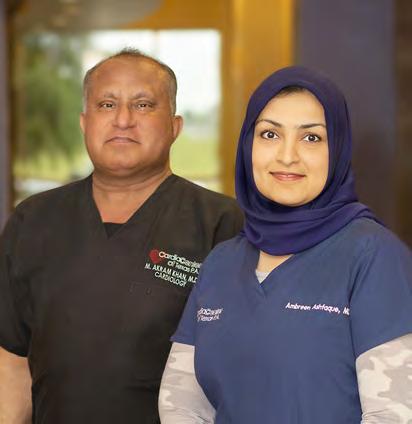
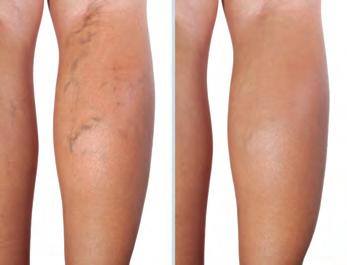
•
•
•
•
•
Older adults in America are living longer lives and will outnumber people under the age of 18 by nearly 500,000 by 2034, according to the U.S. Census Bureau. However, living longer does not automatically mean living healthier or happier. In fact, nearly 61% of people in America aged 65 and older live with chronic conditions, according to the National Institutes of Health; and a report from the National Academies of Sciences, Engineering and Medicine found nearly one in four older adults are considered to be socially isolated.
Research published in “Health Affairs” indicates that people who advocate for their own care feel more empowered. The age-friendly health systems approach can help older adults take control of their well-being and demand care that helps them maintain independence by making sure their doctors know their needs and preferences; also called “what matters.”
Just as the name implies, age-friendly care prioritizes what matters most to each individual older adult and helps meet goals such as daily walks around the neighborhood or cooking favorite meals. To get started, consider these four essential elements of age-friendly care from The John A. Hartford Foundation to discuss with your doctor:
WHAT MATTERS. As people age, what matters most to them might change. It is important to share concerns, goals, wishes, needs and experiences with your health care providers. What matters also includes endof-life care goals and preferences.
MEDICATION. Many older adults take multiple medications, which can cause side effects and, in turn, impact daily living. Honest conversations with doctors about medications, their interactions and side effects can ensure treatment plans are optimizing quality of life.
MENTATION. Older adults are at higher risk for dementia, depression and delirium,
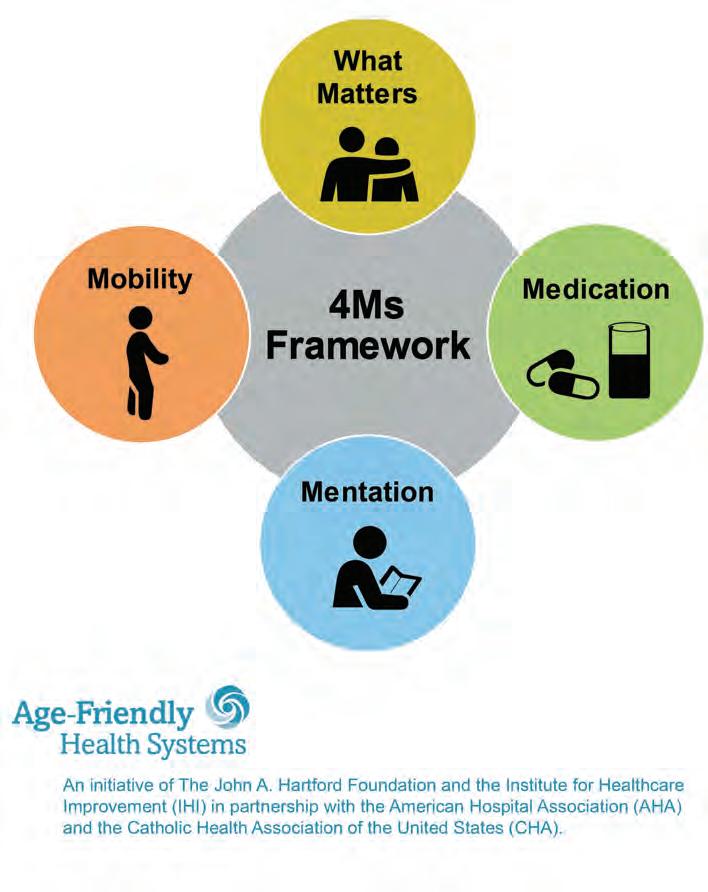
and conversations with medical providers about changes in memory or mood and annual screenings for dementia and depression can lower the risk.
MOBILITY. Staying active can help older adults maintain health and independence. Talking to health care providers about mobil-
ity concerns can identify personalized tips to improve strength, flexbility and balance.
Healthy aging is possible when the patient and care team are on the same page with the same plan in mind. For ideas on how to start these conversations, visit johnahartford.org/ agefriendly.
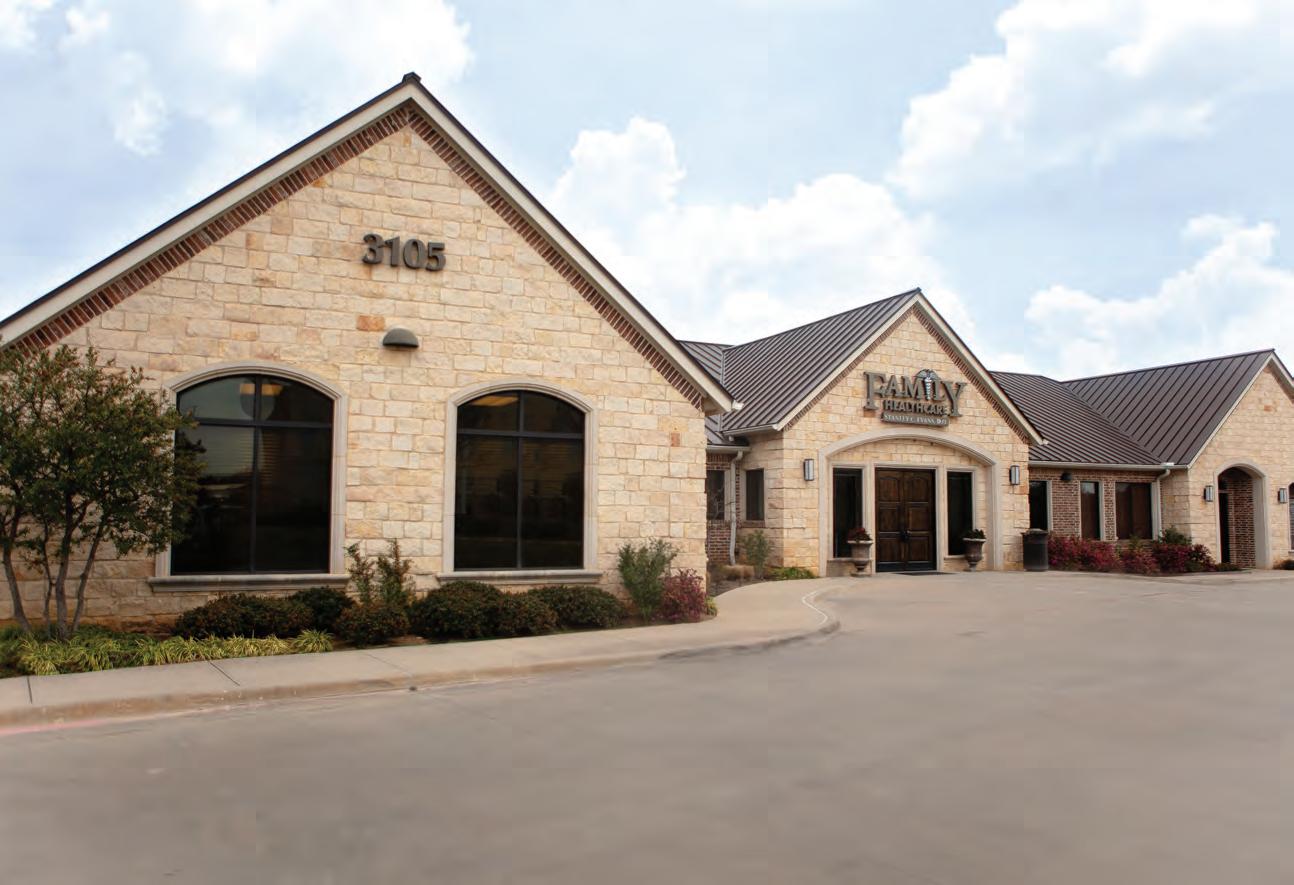

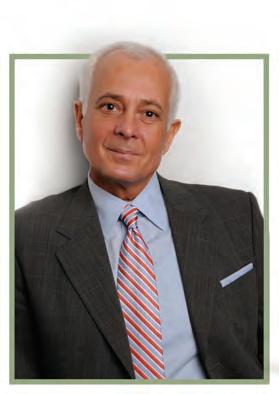
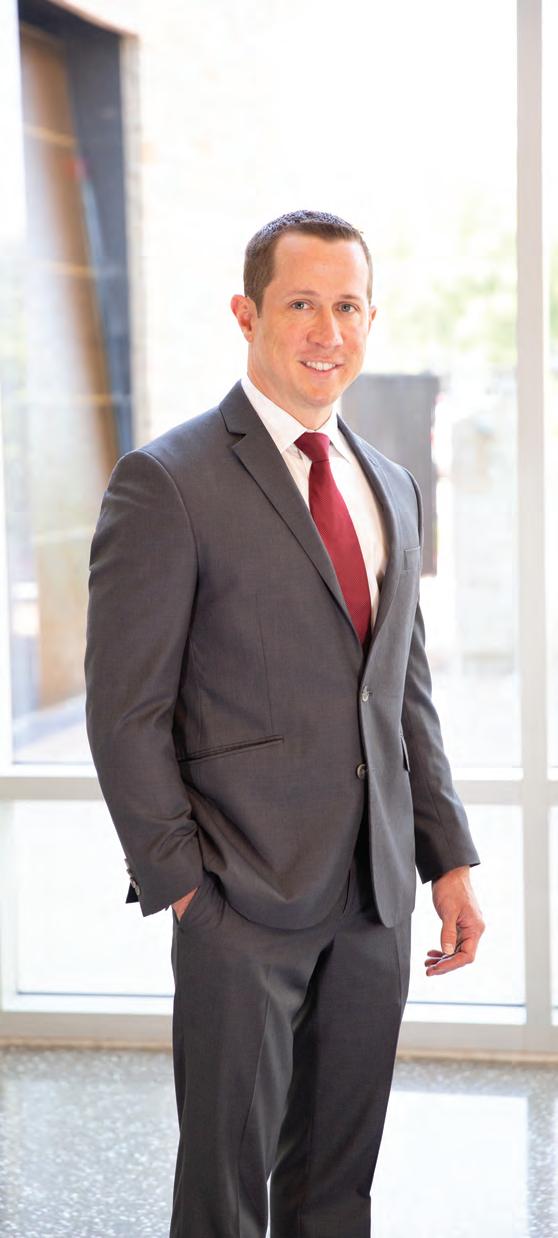
Dr. Chambers is an orthopaedic surgeon at Dallas Orthopaedic Joint Institute who specializes in joint replacement surgery. He received extensive training in joint replacement surgery during his fellowship at Harvard Medical School / Massachusetts General Hospital, which was voted as the top hospital in the United States. Dr. Chambers has implemented the techniques learned at Harvard Medical School into his own practice and offers minimally invasive total hip / knee replacement, partial knee replacement, revision surgery for malfunctioning, loose, and infected joint replacements, arthroscopic surgery of the hip and knee, and revision of failed and recalled metal-on-metal total hip replacement implants. Dr. Chambers focuses special attention on surgical techniques for rapid recovery after total joint replacement which allow his patients a more predictable and earlier return to home and an active lifestyle.
Dr. Chambers is pleased to offer the MAKOplasty Robotic-Arm Assisted partial/total knee and hip replacement. The MAKOplasty procedure is changing the way joint replacement surgeries are performed by providing each patient with a personalized surgical experience based on their specific diagnosis and unique anatomy using a CT-based 3D modeling. The robotic arm technology allows for extremely precise placement of hip/knee components with potentially less soft tissue injury than traditional joint replacement.
Dr. Chambers is a Texas native and grew up in Houston, Texas. He attended medical school at The University of Texas Medical Branch in Galveston, and completed residency at John Peter Smith Hospital in Fort Worth, Texas. He then completed a fellowship in joint replacement surgery at Harvard Medical School. In his free time, Dr. Chambers enjoys traveling with his wife, Christine, and spending time with friends and family. He is an avid sailor and enjoys participating in sailing races on the local lakes in the Dallas/Fort Worth area.
Dr. Chambers practices at Methodist Dallas, Charlton, and Richardson Hospitals. To schedule an appointment please call or text 469-747-0382.
METHODIST DALLAS MEDICAL CENTER
221 W. Colorado Blvd., Pav II, Suite 431 Dallas, Texas 75208
METHODIST CHARLTON MEDICAL CENTER

3430 W. Wheatland Rd., POB 1, Suite 216 Dallas, Texas 75237
469-747-0382
469-405-0135 FAX dallasorthojoint.com

 Diane S. Litke, MD Diplomate American Board of Orthopaedic Surgery
Diane S. Litke, MD Diplomate American Board of Orthopaedic Surgery
Dr. Litke is a passionate artist, both in her spare time and as an orthopaedic surgeon. At L&W Orthopaedics, she approaches every orthopaedic problem with an eye toward restoration of function and mobility. With a deep knowledge of the inner workings of the body’s most active and important joints, Dr. Litke is able to repair most hip, knee, and shoulder problems, giving her patients the freedom to move again. Assisting her skilled hands, she uses the latest state-of-the-art robotic equipment for accuracy and precision, delivering a powerful combination of experience and technology to all of her patients.
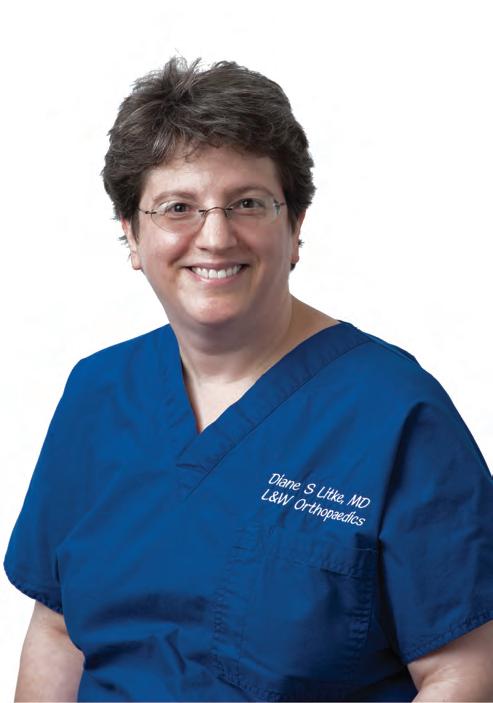
Dr. Litke earned her medical degree at the University of North Carolina Chapel Hill. She went on to complete her orthopaedic residency at the University of South Carolina in Columbia South Carolina. She is certi ed by the American Board of Orthopaedic Surgery, and is a Fellow of American Academy of Orthopaedic Surgery and a Fellow of the American Association of Hip and Knee Surgeons. Dr. Litke is a liated with the Methodist Richardson Medical Center, where she is the director of the joint program. When she’s not working, Dr. Litke enjoys photography and ceramics.
Please call 972.498.4791 to schedule an appointment.


The greatest sacrifice may be little more than stepping outside your comfort zone or setting aside a little happiness in exchange for something more fulfilling, uplifting, and meaningful.
BY
PHOTO JOSHUA EARLE“It is not the years in your life but the life in your years that counts.”
—Adlai Stevenson
The point Stevenson illustrates is a reminder of how it’s easy to lose sight of living a meaningful life. It’s an interesting phenomenon the amount of time, energy, and money we invest in living healthier, longer, and happier lives. Yet, we often still feel unsatisfid and that our lives are devoid of meaning.
When it comes to living a meaningful life, there’s no one size fits all solution. What makes life meaningful is unique to each and every person. So to fid meaning, you may need to do some exploration to discover what speaks to you.
Meaning can come from many different avenues. Unlike happiness, which stems from receiving or doing things for yourself, meaning comes from giving or doing for others.
Perhaps for you, it comes from fostering a close family relationship. For some, it’s about choosing a fulfilling career path that involves helping others through teaching, nursing, counseling, or coaching. Others fid meaning by giving back to their community by joining the Kiwanis or volunteering as a Big Brother or Big Sister. Purpose can also come from forming an organization for a national cause you’re passionate about. Or perhaps taking up a hobby you enjoy, such as gardening, then donating your excess produce to a soup kitchen.
But before you begin your journey to explore new avenues for meaning, evaluate what you’re doing with your life right now. Maybe you’re already giving in a way you don’t even realize and aren’t giving yourself enough credit. If so, you may just need to reframe in your mind what you’re already doing and understand what you do really does matter. If it still isn’t enough to satisfy your quest for a meaningful life, explore other options that are important to you.
After you’ve determined what would bring meaning to your life is often where the challenge lies. You must now make a conscious decision and concerted effort to follow through. If you’ve chosen a challenging path, only you can decide if the sacrificeand risk are worth the reward of a meaningful life.
Often, we blow our sacrificesand risks way out of proportion. The most signifiant risk may merely be an unrealistic fear of failure. The greatest sacrificemay be little more than stepping outside your comfort zone or setting aside a little happiness in exchange for something more fulfilling, uplifting, and meaningful.
If these are the things holding you back, work toward changing your frame of mind. Schedule 20 minutes a day to sit in solitude with your eyes closed envisioning your meaningful life. Allow yourself to build excitement and desire for that which would bring meaning to you and others. Also, spend some time each day reading or listening to audiobooks and watching online videos relevant to the activity that would bring meaning.
If you fid you’re still holding yourself back, talk to supportive family and friends, and ask them to hold you to it. A counselor or coach can also lend support to help you move toward your goals.
Whatever path you choose, and regardless of its outcome, give yourself credit for your efforts. Remember, having a meaningful life is often as much about how you perceive what you do as it is about what you do.
Maybe you’re already giving in a way you don’t even realize and aren’t giving yourself enough credit.
At Roberts Cosmetic Surgery Center, Dr. Roberts specializes in facial cosmetic medical procedures, including the “scarless” face lift, endoscopic brow lift, blepharoplasty, rhinoplasty, otoplasty, chin and lip implants. For over 20 years, Dr. Roberts has focused his surgical specialty on the face, but he also performs minimally invasive cosmetic medical procedures, such as BOTOX® and dermal filler procedures. Dr. Roberts is dual Board certified by both the American Board of Facial Plastic and Reconstructive Surgery as well as the American Board of Otolaryngology | Head and Neck Surgery.
Dr. Roberts personally performs all surgical procedures, BOTOX® and filler procedures. Laser and resurfacing procedures at Roberts Cosmetic Surgery are performed by a certified and licensed aesthetician, while his support staff endeavors to provide optimal patient care.
“There’s a tremendous amount of satisfaction that comes along with my work,” Roberts says. “Seeing patients get positive results from their procedure, as well as seeing their renewed confidence, and then hearing the reaction of others in their lives is very fulfilling.” Dr. Roberts’ procedures are performed at an AAAASF certified facility near George Bush Tollway and Preston Rd in Dallas suburb, Plano, Texas. Read more here about what his patients say about him. View more before-and-after photos and review additional information at RobertsCosmeticSurgery.com.
To schedule a consultation, call (972) 608-0000.

5144 Village Creek Dr. Plano, Texas 75093 (972) 608-0000 robertscosmeticsurgery.com
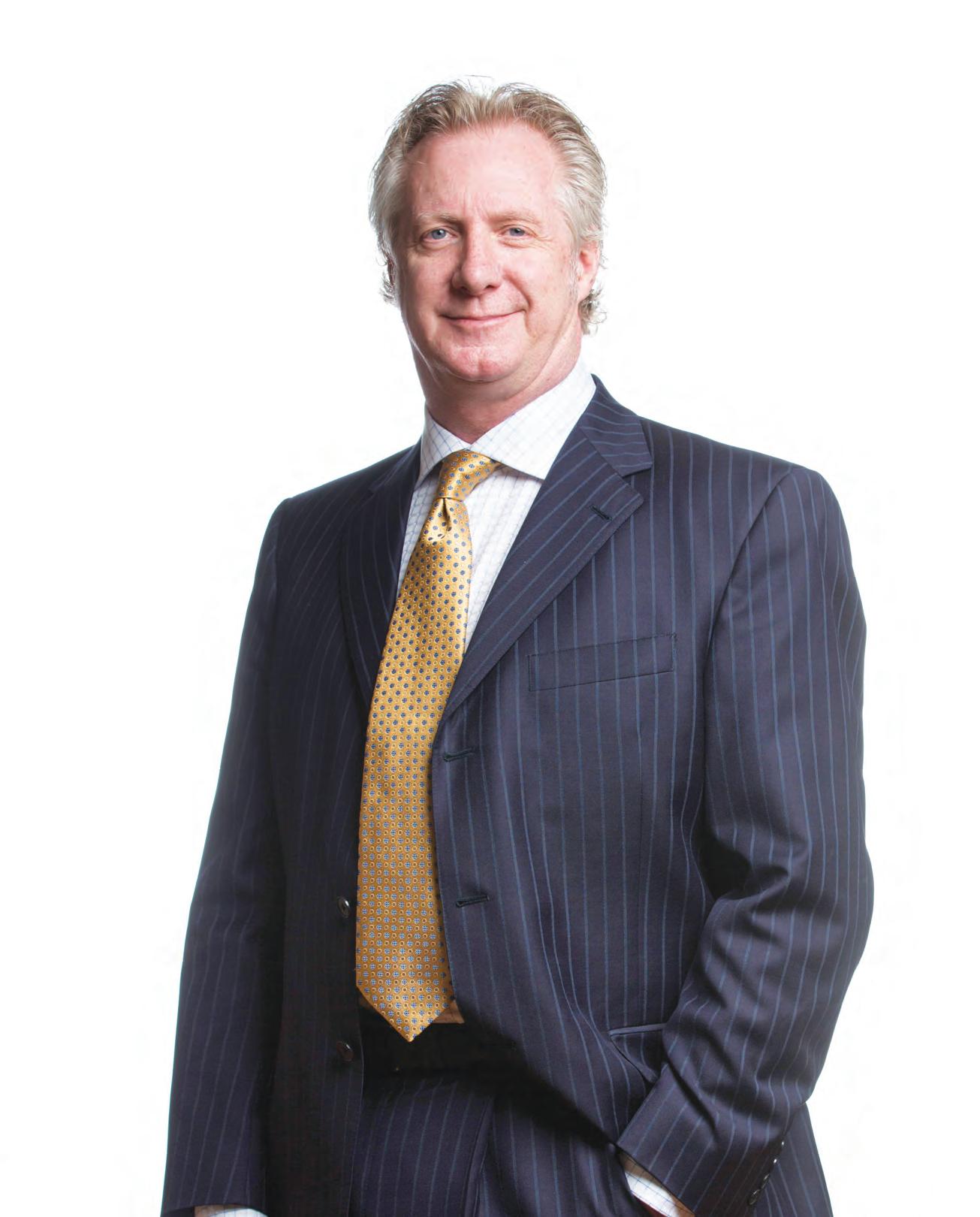

Nationally-known facial plastic surgeon Dr. Gregory D. Roberts has refined a face lift technique, known as the “scarless” face lift, which allows patients to recover from surgery with virtually no visible scarring. The “scarless” face lift involves a series of surgical methods and meticulous precision that can help restore more natural, youthful facial features with virtually imperceptible signs of surgical intervention.
“My one guiding principle is that your cosmetic surgery looks natural,” said Dr. Roberts. “You should look refreshed and well-rested, never pulled.” Dr. Roberts takes the time necessary to meticulously place and close incisions, ensuring that his patients’ incisions are virtually invisible, as well as helping to minimize bruising and quicken the healing process.
Many of Dr. Roberts’ patients also find pleasing results with a non-surgical face lift alternative known as a Liquid Face Lift. Revolumizing the face with a Liquid Face Lift can be done alone or in conjunction with a face lift to restore natural, youthful volume and contours.
KM contacted Dr. Roberts after viewing some of his online images. During her consultation Dr. Roberts recommended upper and lower blepharoplasty (eyelid lifts) as well as a mini face lift. “I inherited drooping eyes from my dad, sagging jowls from my mother. But Dr. Roberts has completely changed that for me. Now I get comments even from strangers about how good my skin looks. Only my close friends know what I’ve had done, but I feel dramatically different. It’s helped my confidenceand I’m definitely more comfortable when I’m face-to-face with people.
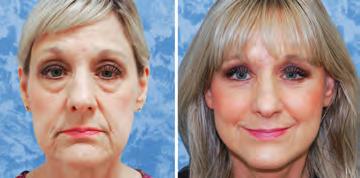
At 51, JT worked to stay in shape but couldn’t stop the natural signs of aging. The sagging in her neck and jowl area started to bother her so much she no longer wore her hair off her face. “I feel young and wanted to look more youthful,” she said. After a mini face lift, she’s thrilled with the results. “Not one person has said, ‘Did you have a face lift?’” she said. “But people do tell me how pretty my skin is. I didn’t want to overdo it, and what Dr. Roberts did is perfect. Everyone in his office was attentiv, helpful and supportive. I’d definitely do it again.
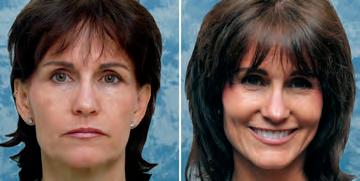

At 53, JR, below, had a face lift, endoscopic brow lift and lower blepharoplasty performed in one procedure. “Before the surgery I looked tired and my jowl area and the skin around my mouth sagged,” she said. “Dr. Roberts spent a lot of time explaining everything and answering my questions. After surgery, I was wearing a ponytail two weeks later and attended a work conference a week after that. No one could tell I’d just had surgery! To me, it’s so natural. I can’t say enough good things about Dr. Roberts and his staff.”
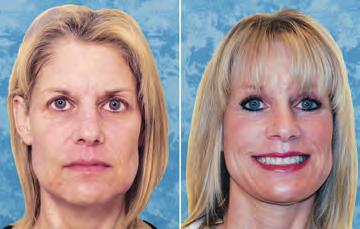

Dr. Gabriel Rodriguez is a board-certi ed anesthesiologist and fellowship-trained interventional pain physician at The Pain Relief Center and is dedicated to the eradication of pain. The Pain Relief Center is a state-of-the-art facility providing custom pain relief treatments and same-day procedures to give each patient the ultimate experience.
Dr. Rodriguez received his medical degree from the University of Texas Health Science Center in Houston, Texas. Following this, he completed his anesthesia residency at the prestigious Mayo Clinic in Jack- sonville, FL (ranked among the very best pain management programs in the country by U.S.News & World Report) and continued his training in the pain relief fellowship. He is now a Diplomat of the Ameri- can Board of Pain Medicine, as well as a Diplomat of the American Board of Anesthesiology.
Dr. Rodriguez approaches pain management from an individualized perspective and diligently prepares a comprehensive pain treatment plan tailored to each patient’s speci c needs. Dr. Rodriguez understands that not all pain is the same and o ers a complete assessment of your pain as well as frequent reassessments to ensure your pain is well controlled. Most procedures are minimally invasive and provide considerable relief. Dr. Rodriguez believes that no one should live with pain and be limited from having the life they once knew.
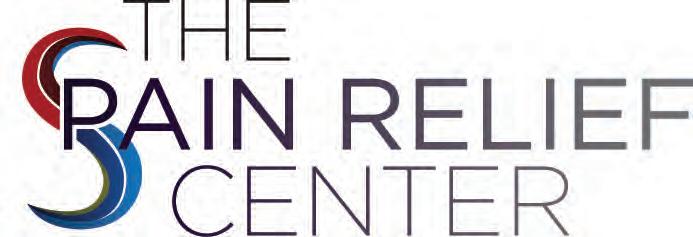
The Pain Relief Center
7709 San Jacinto Place Bldg. 3, Ste. 101 Plano, Texas 75024
214.709.1904
painendshere.com

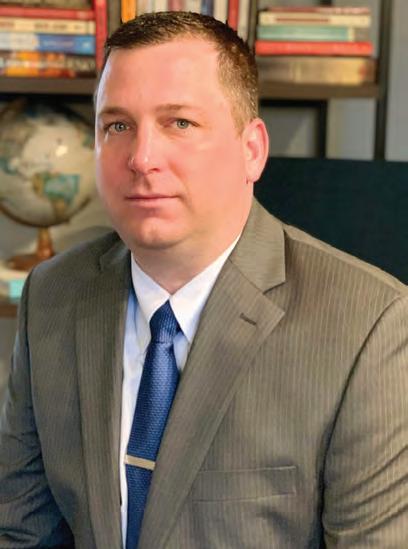
Rawlins Law Firm, LLC represents individuals across the state of Texas. Our firm specializes in providing representation to individuals and companies helping recover Diminished Value on their automobiles.
When your personal or company vehicle is involved in an accident and subsequently repaired, it will have an inherent lost value due to the loss history on the vehicle. When another person’s negligence causes the accident, you have the right to recover the lost value directly from that person’s insurance company.
Get in touch with us to set up a consultation to inquire whether our services are right for you. We at Rawlins Law Firm know that finding the right attorney to represent you is a choice not to be taken lightly. That’s why we offer free consultations to walk you through your needs, the scope of your goals, and your budget.





